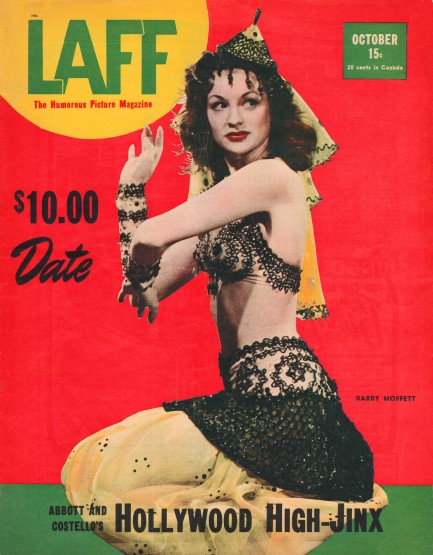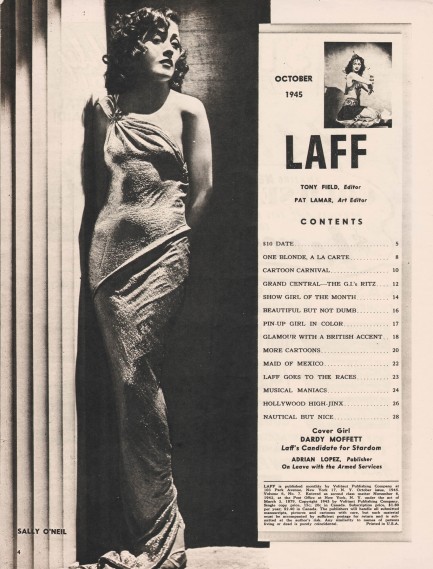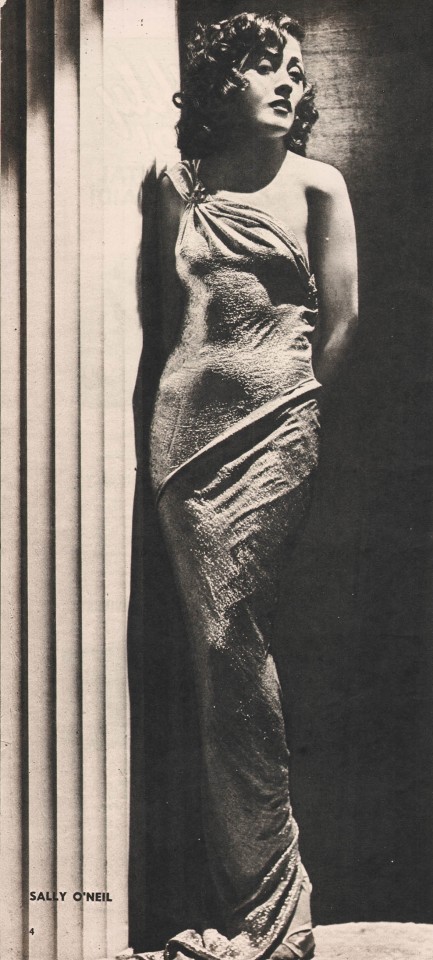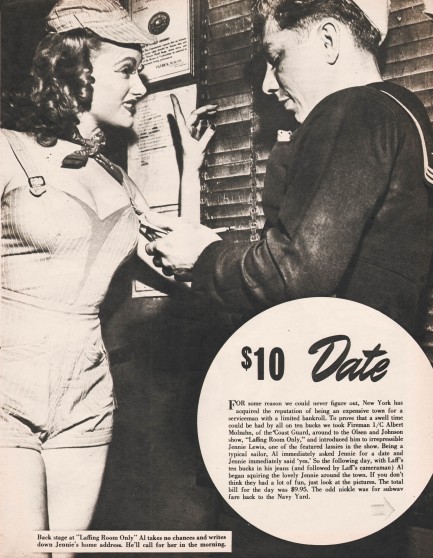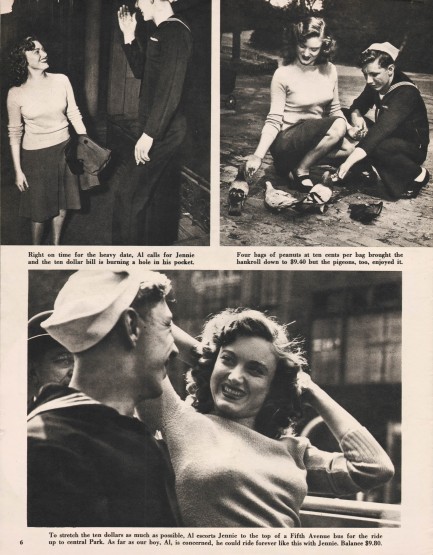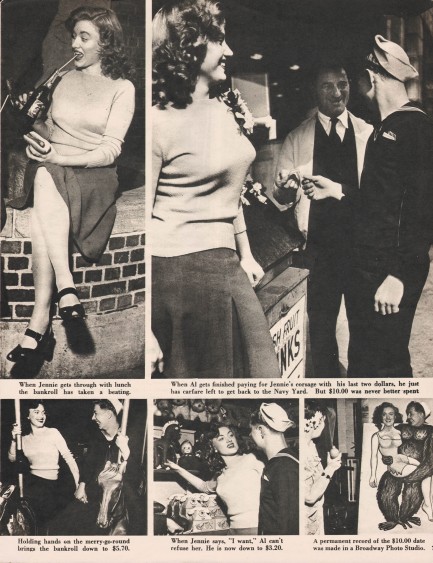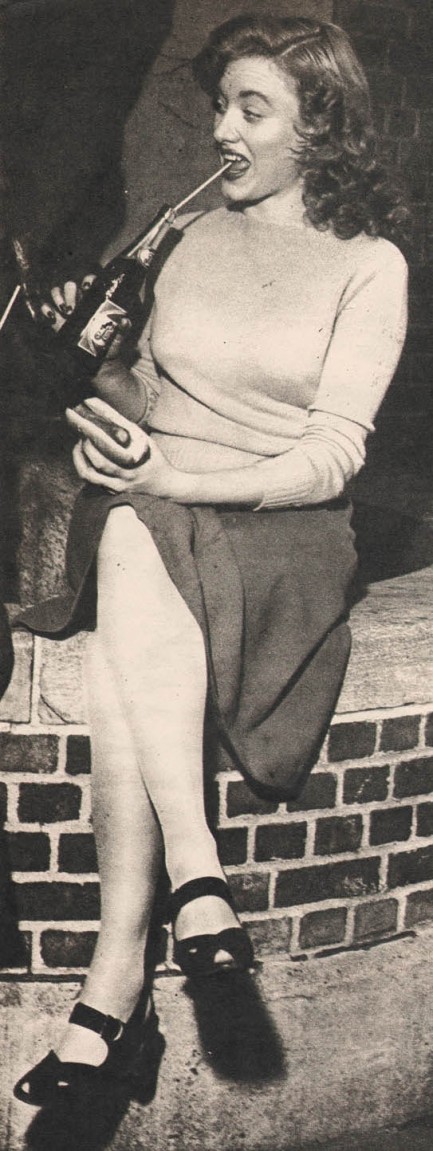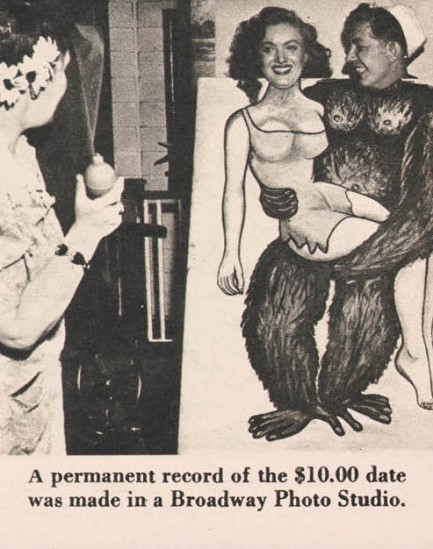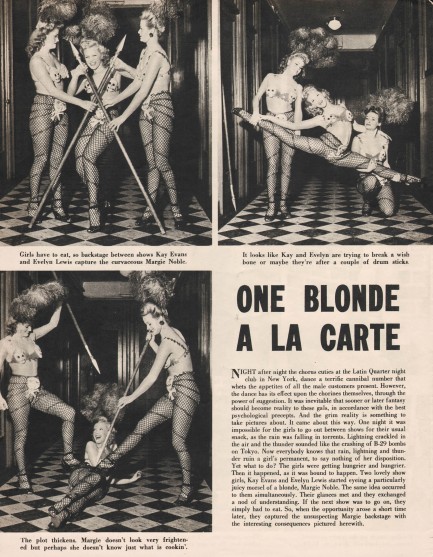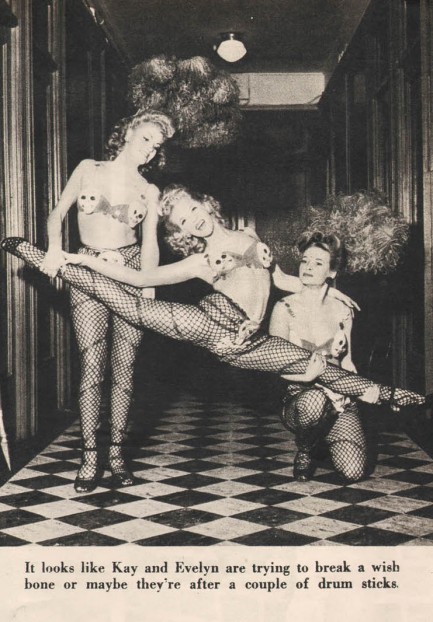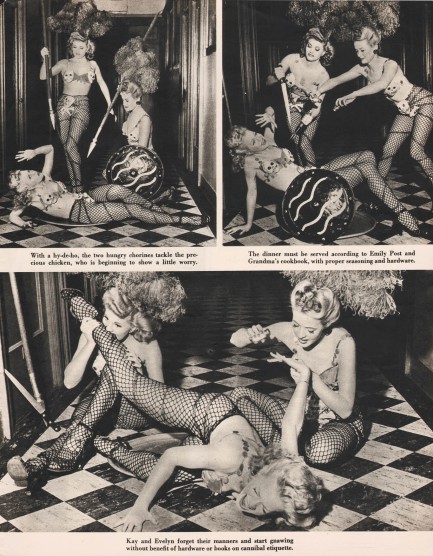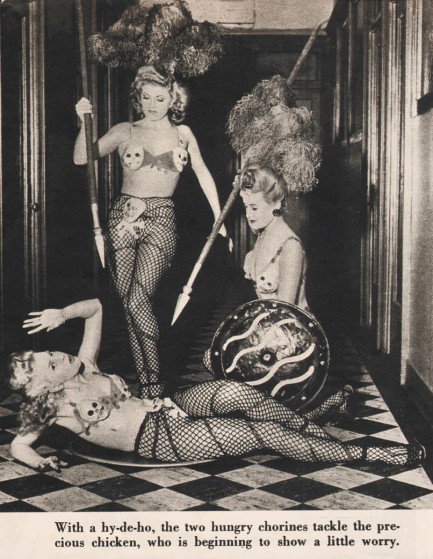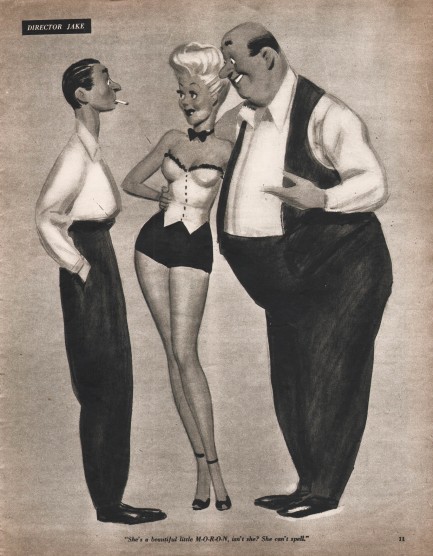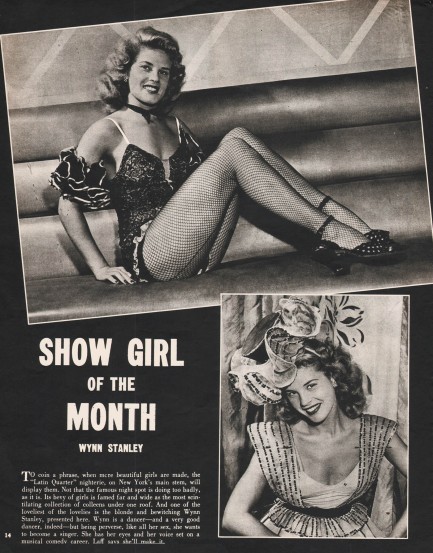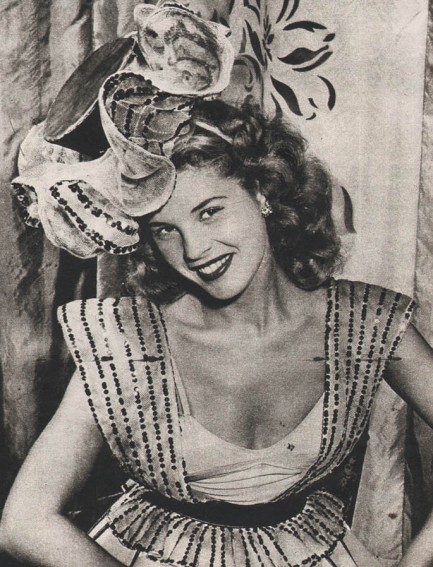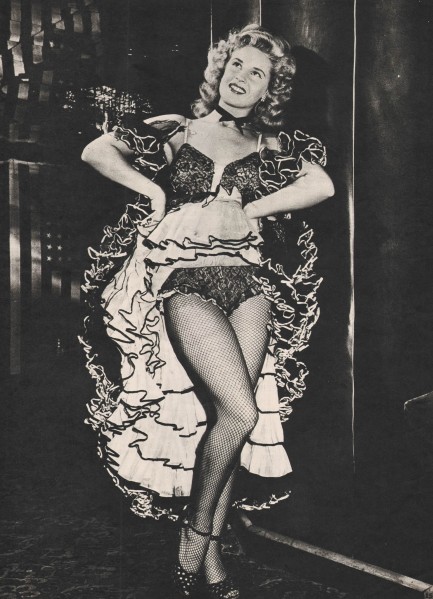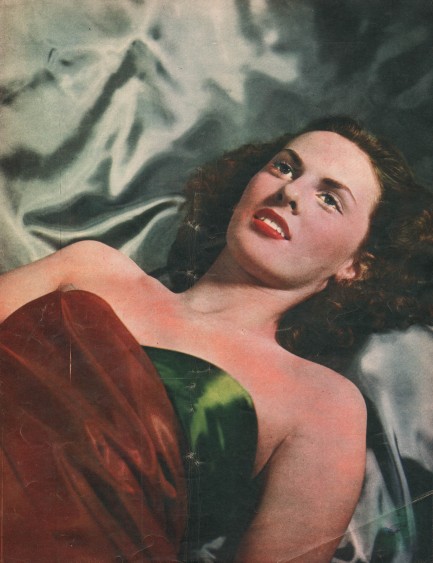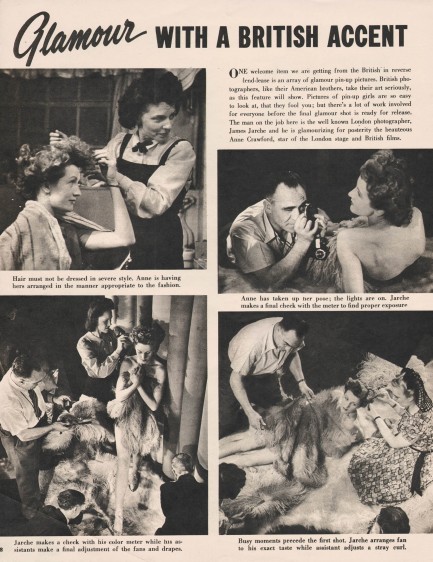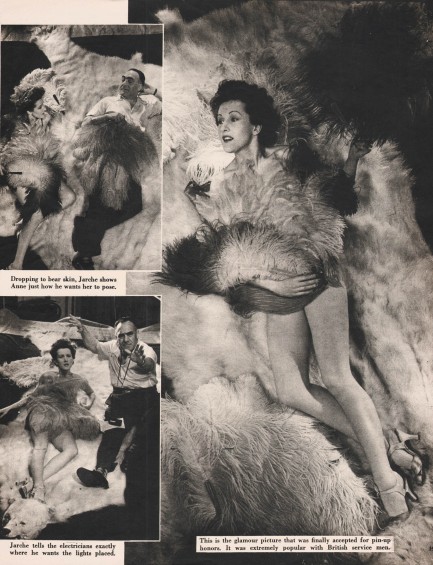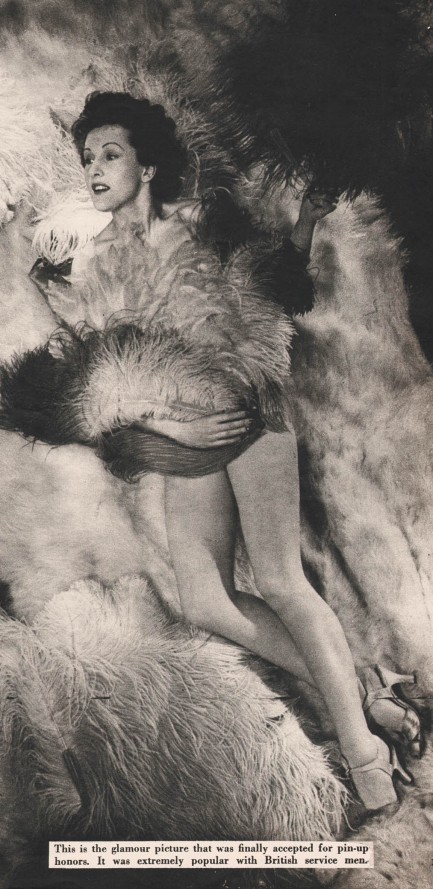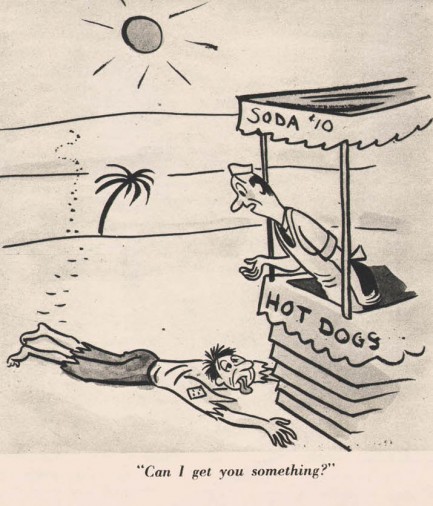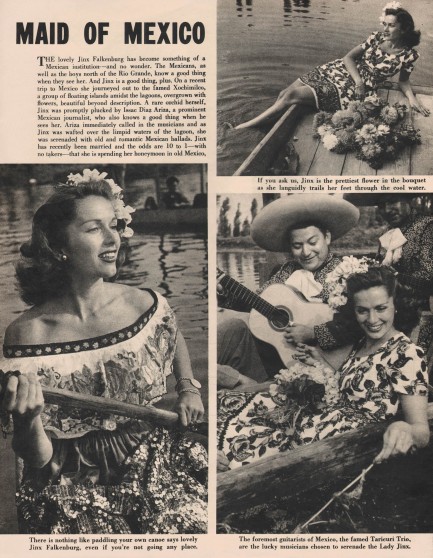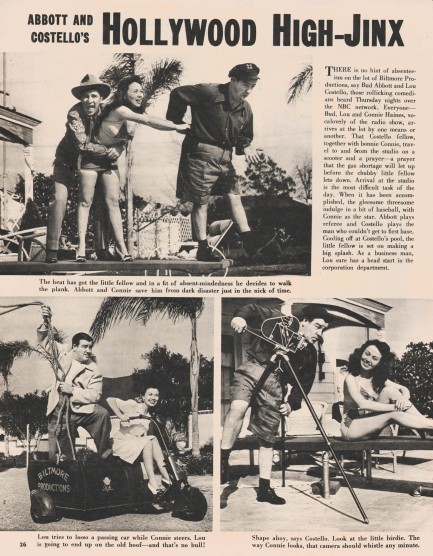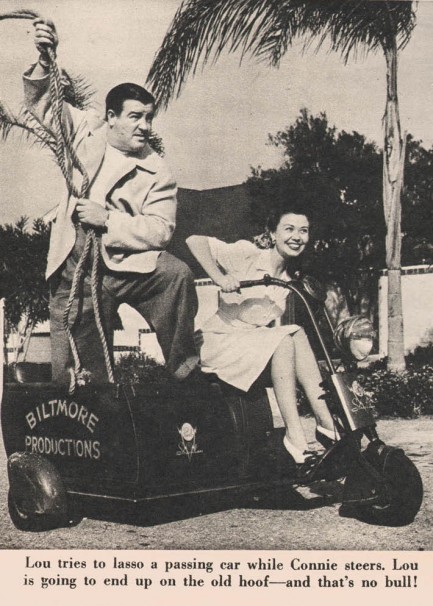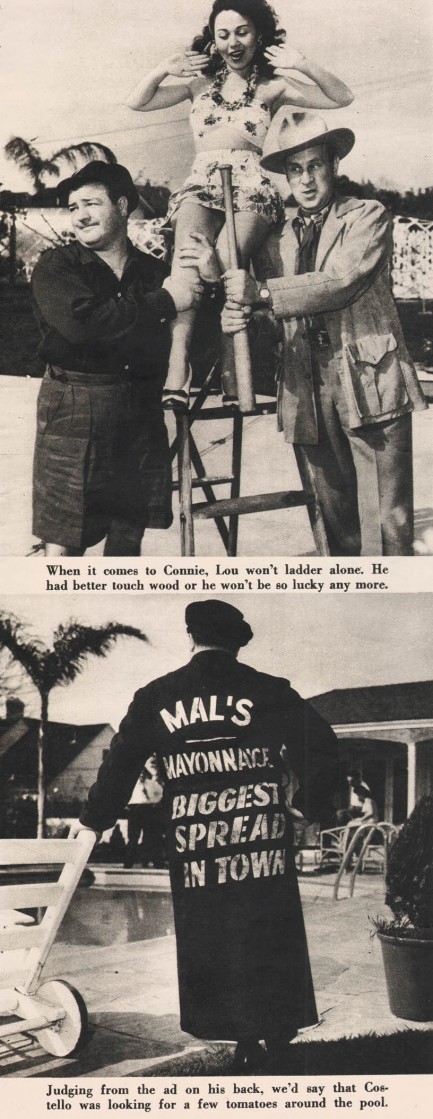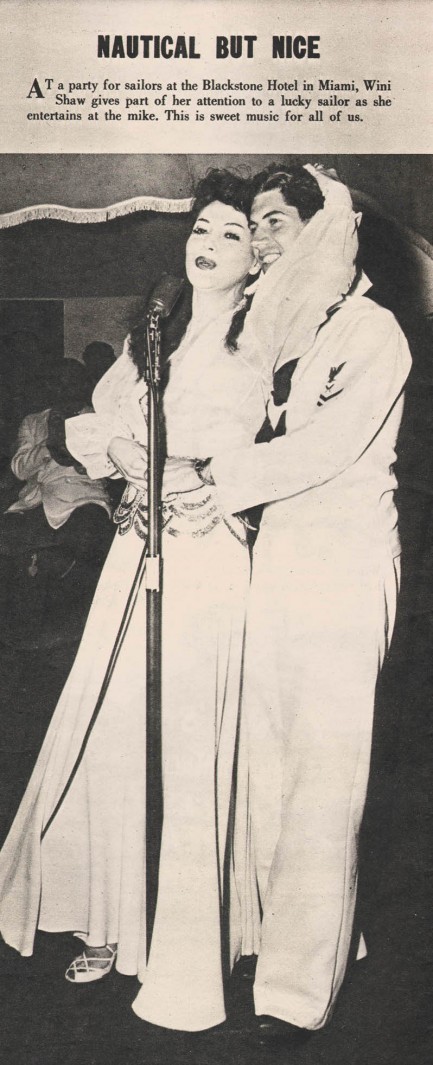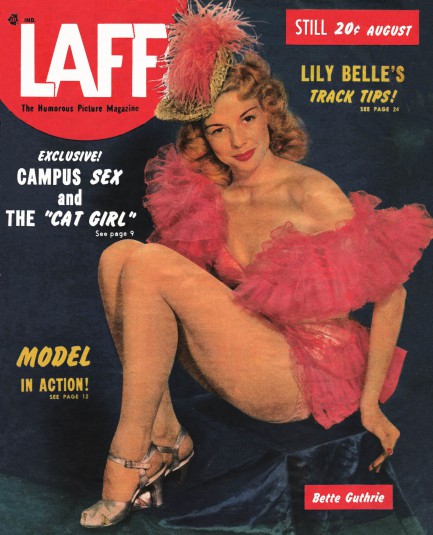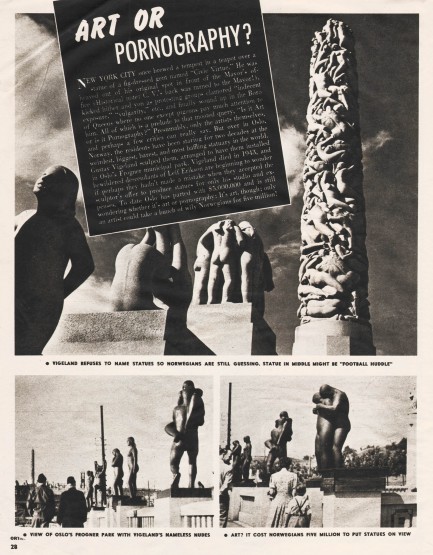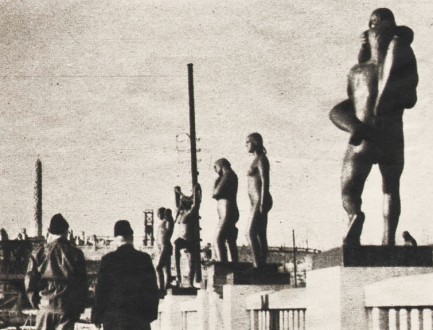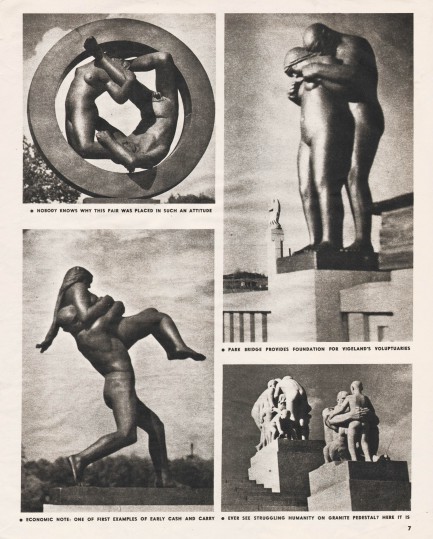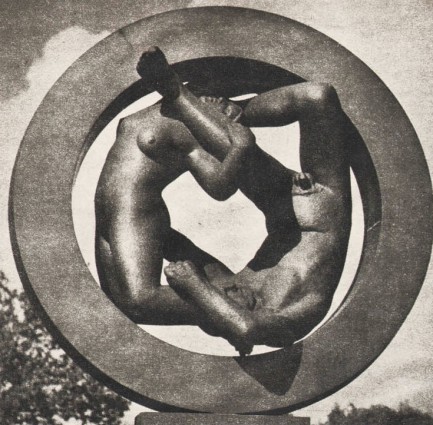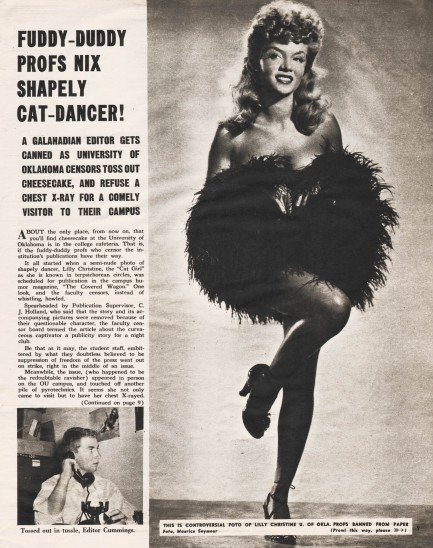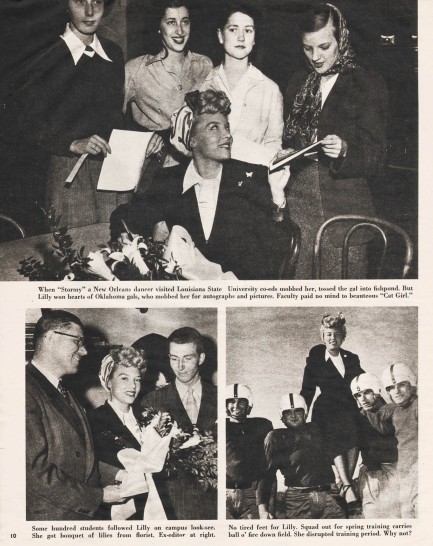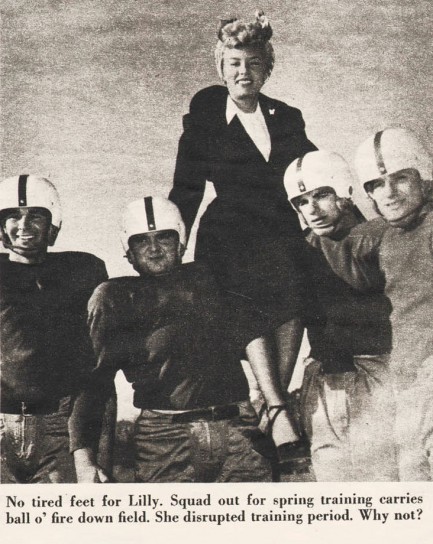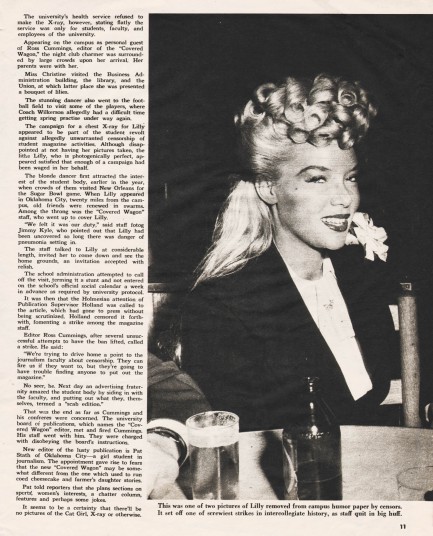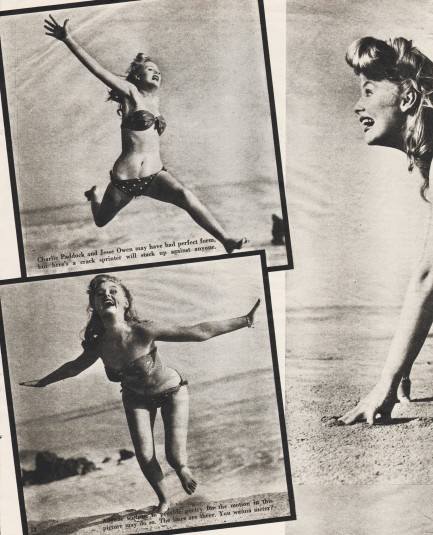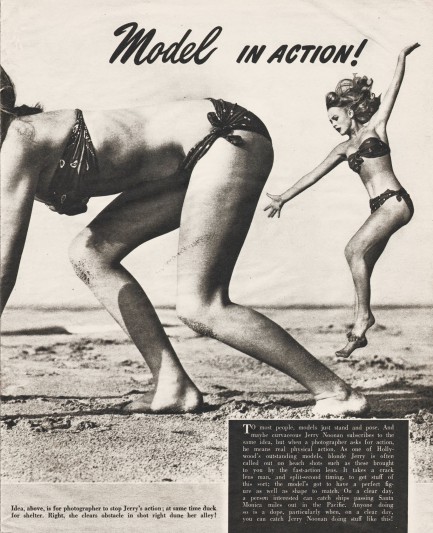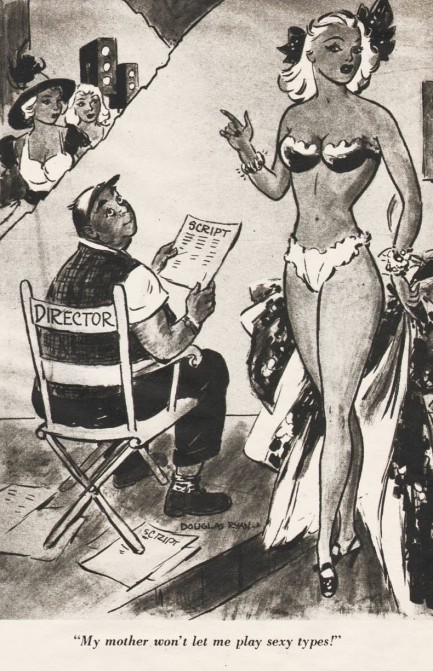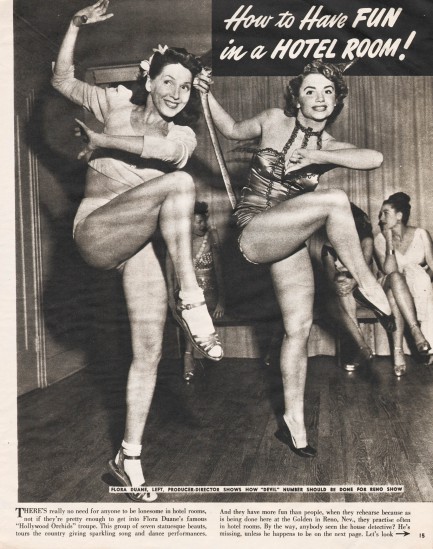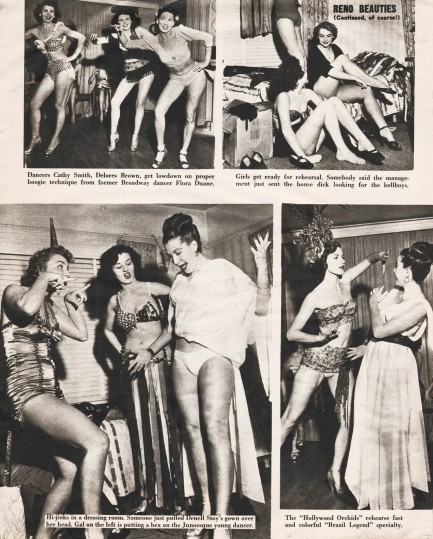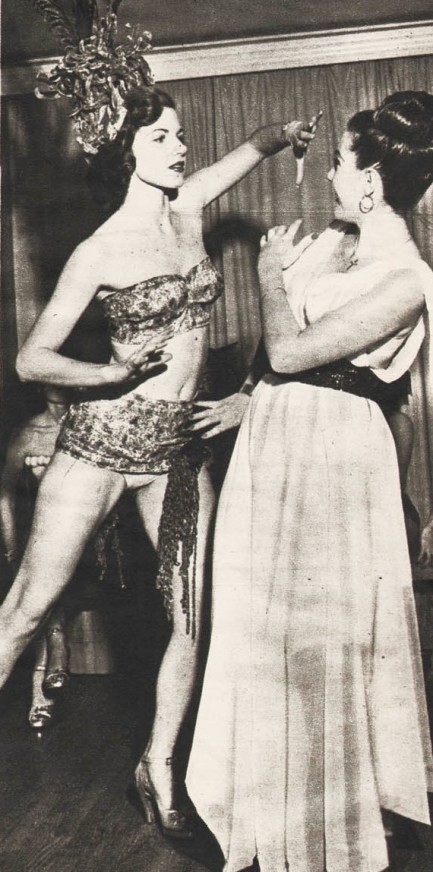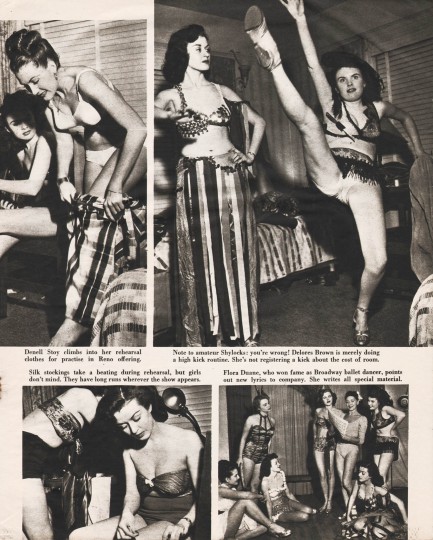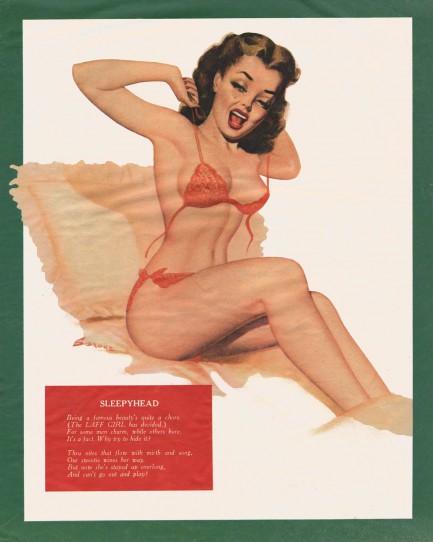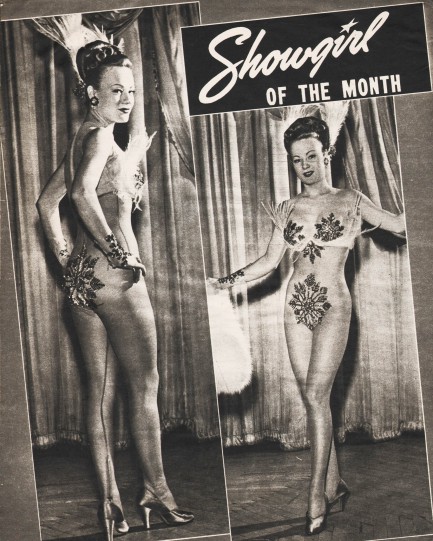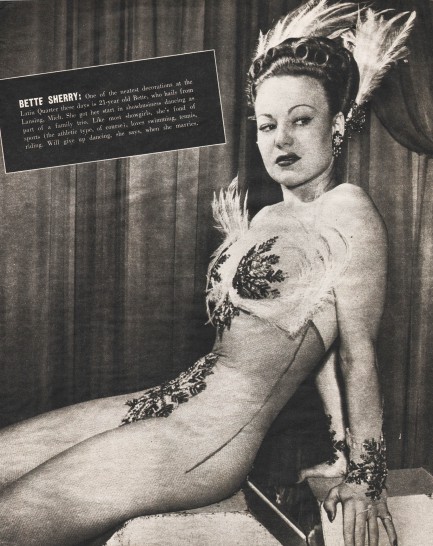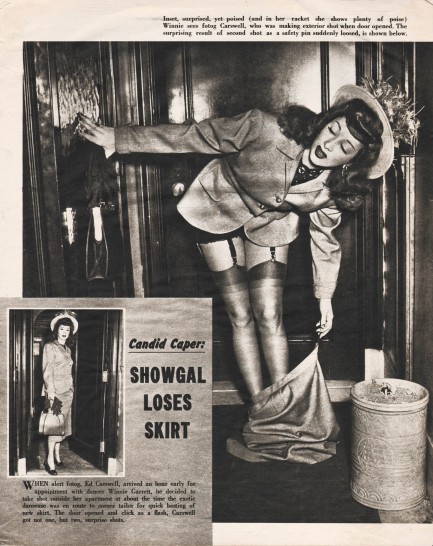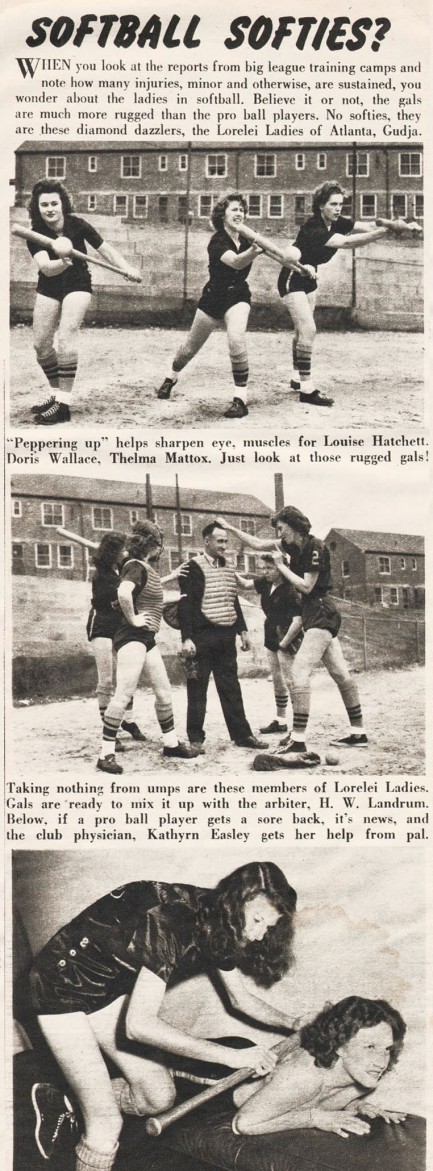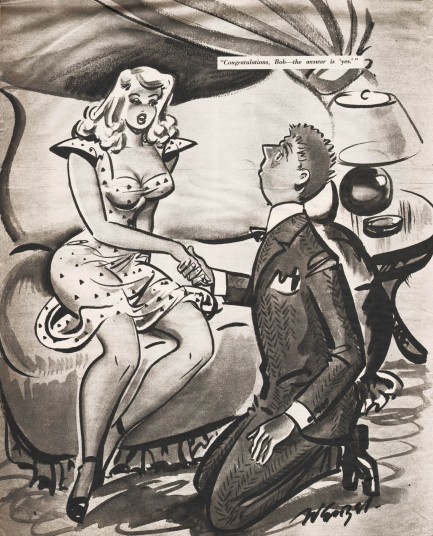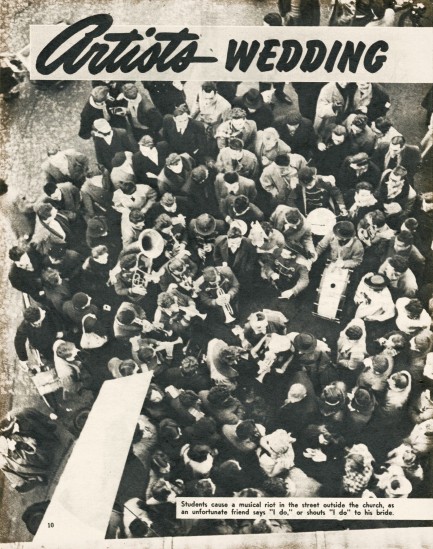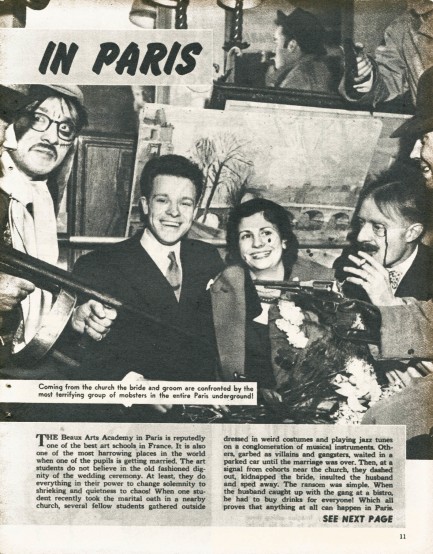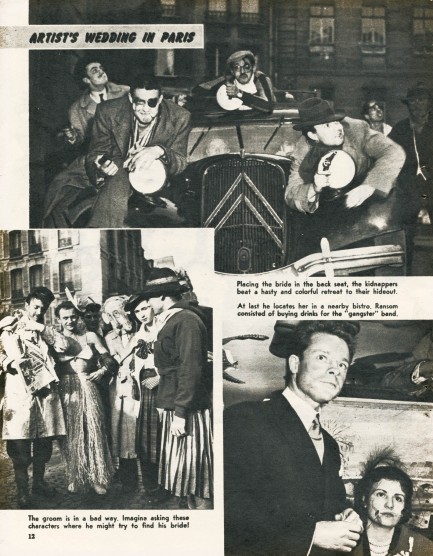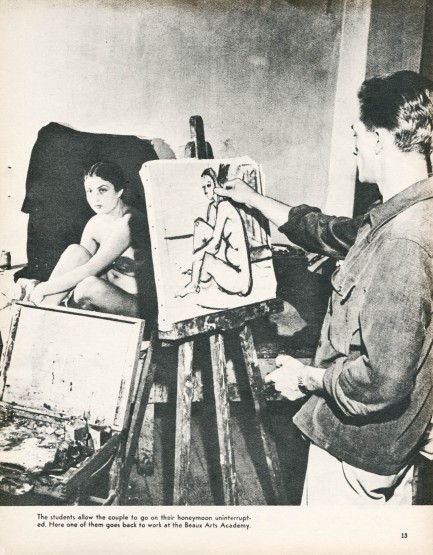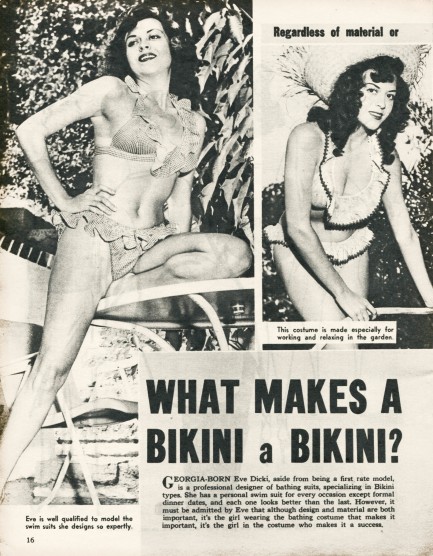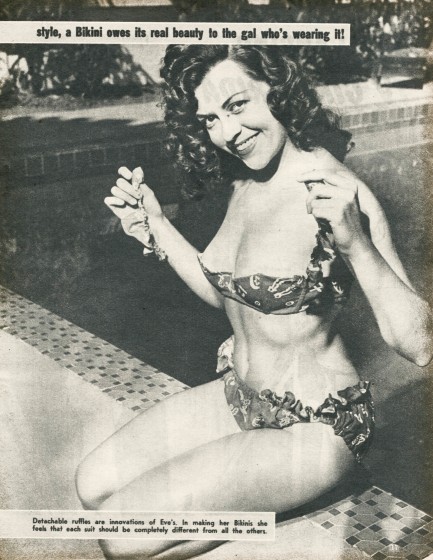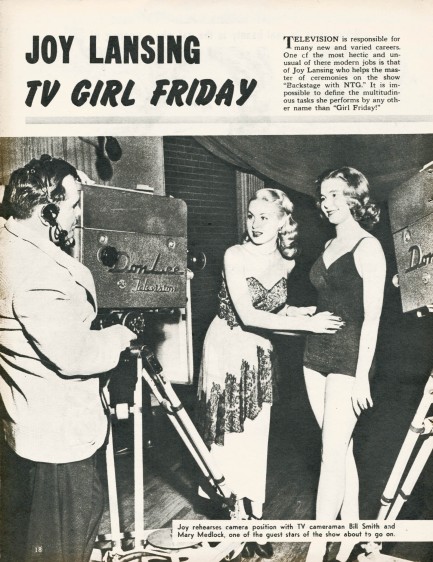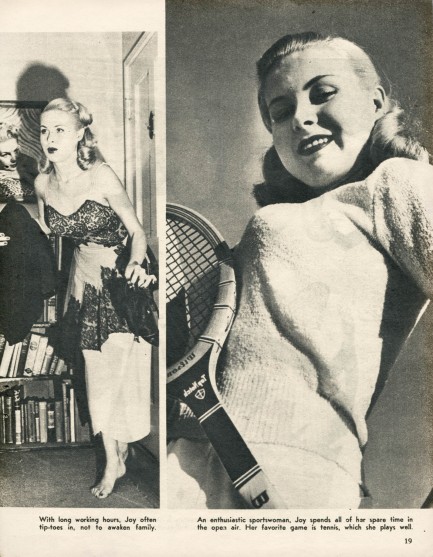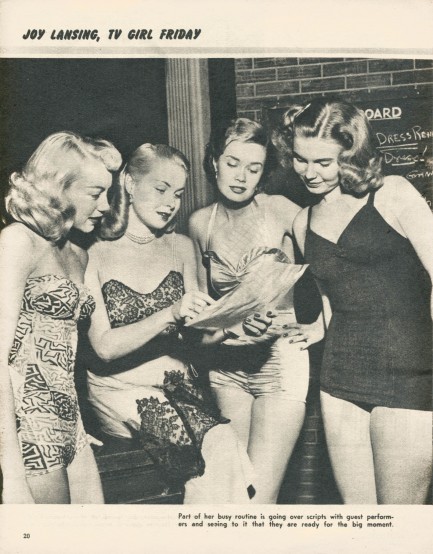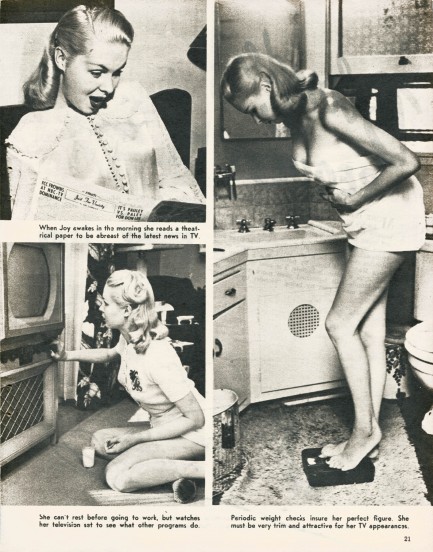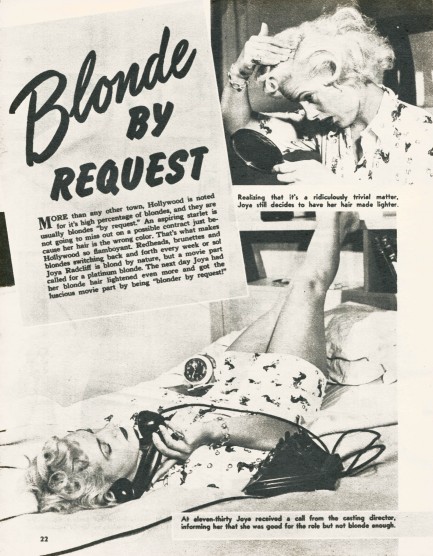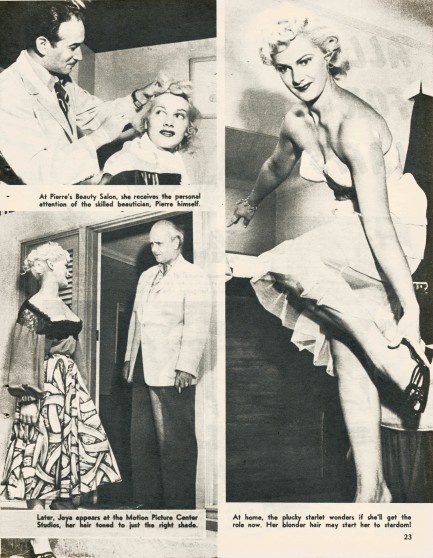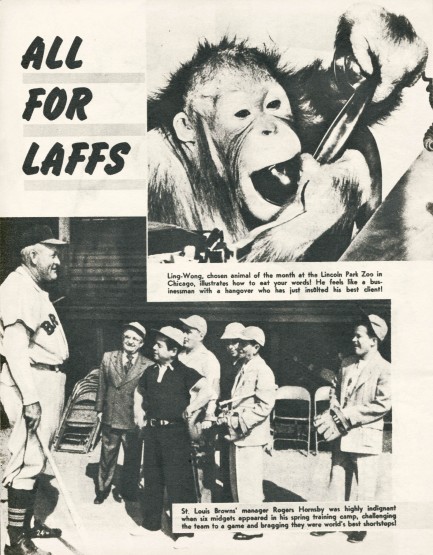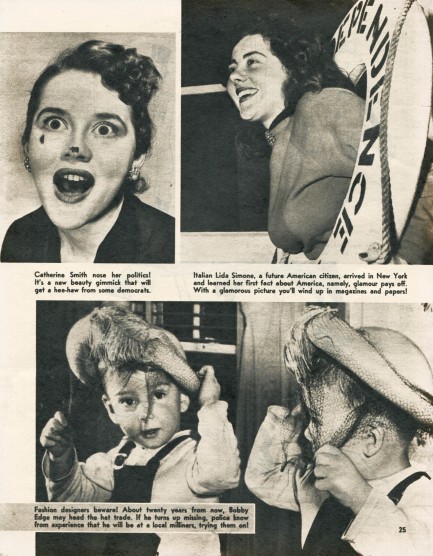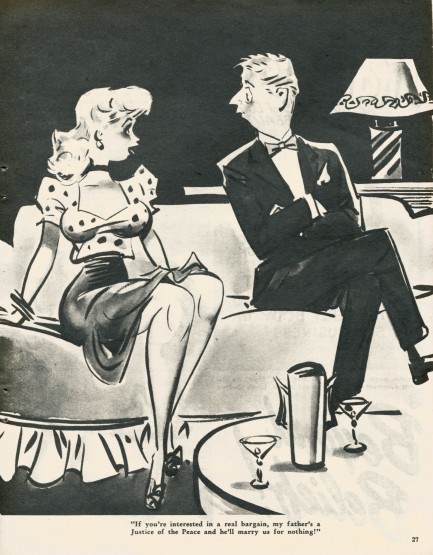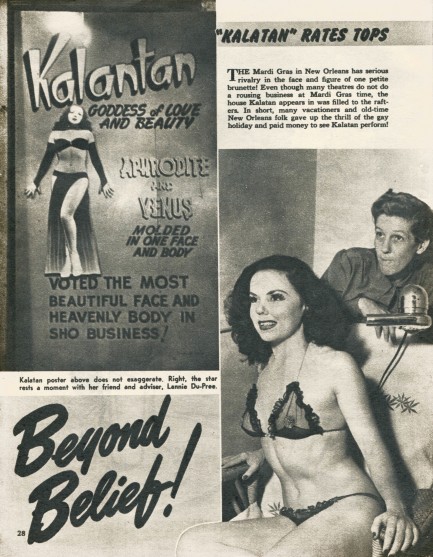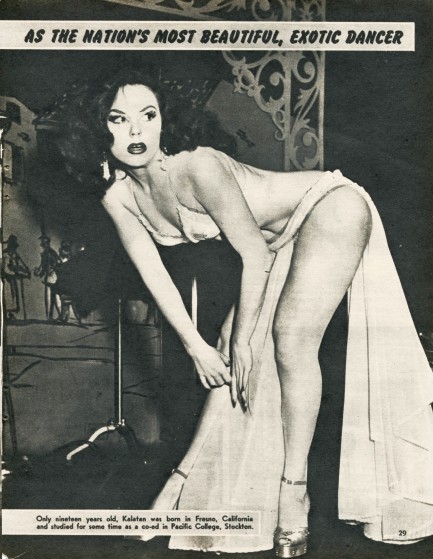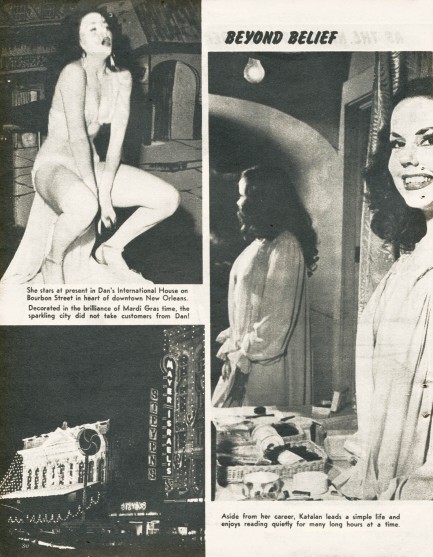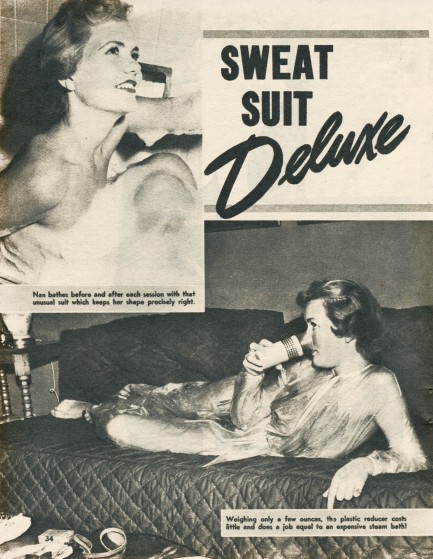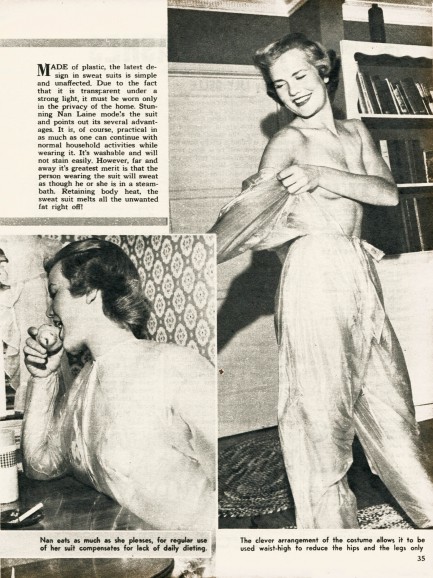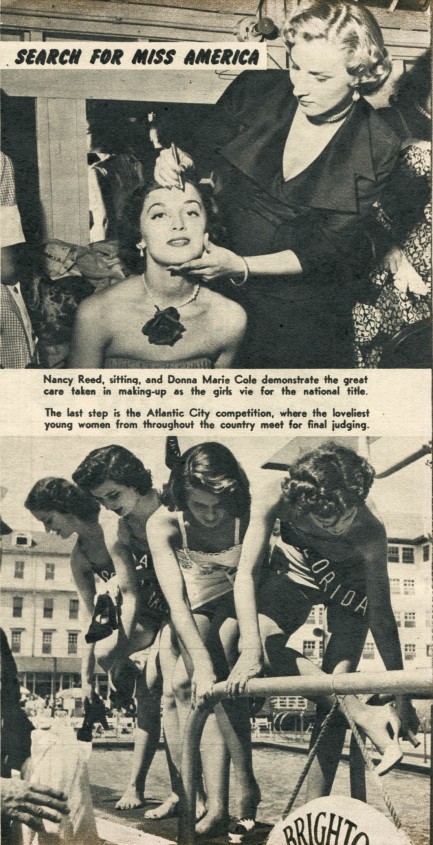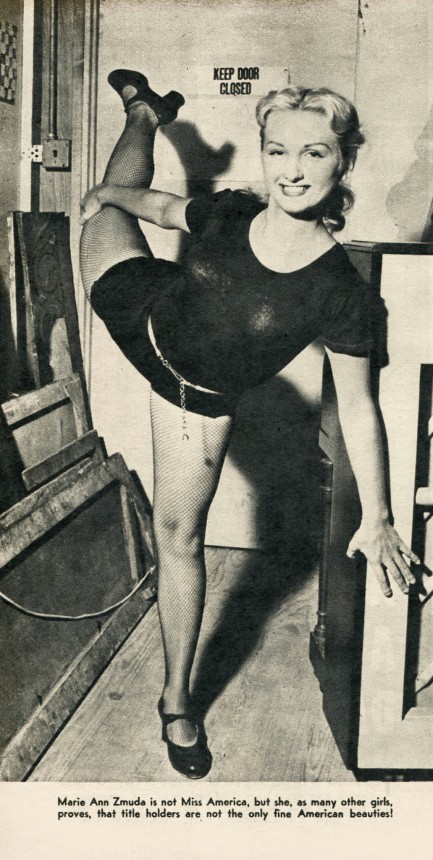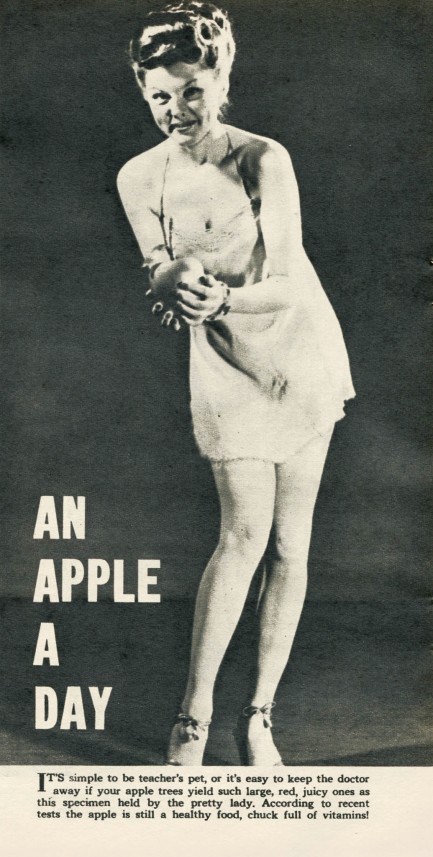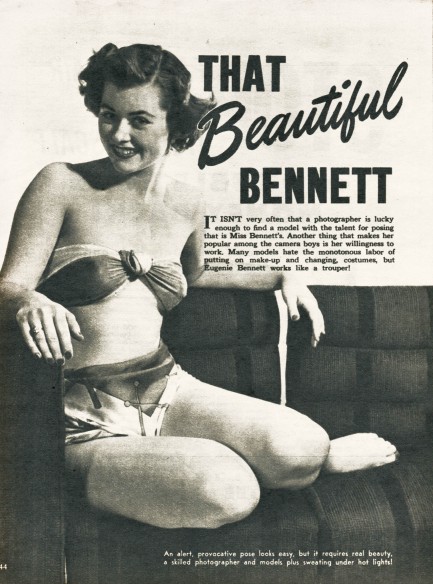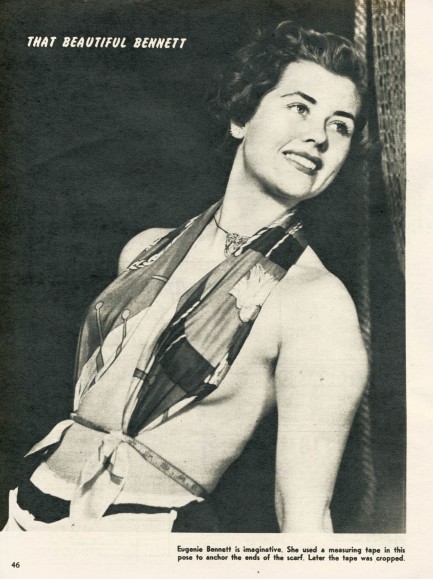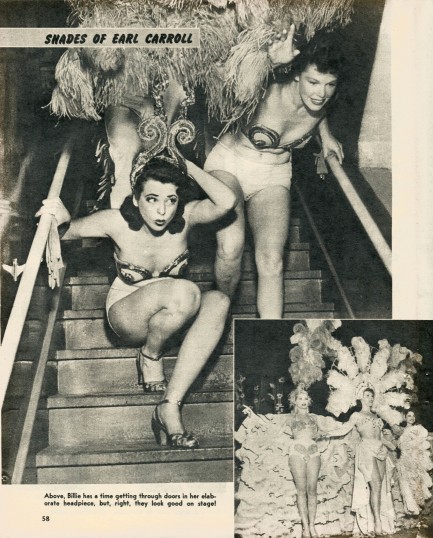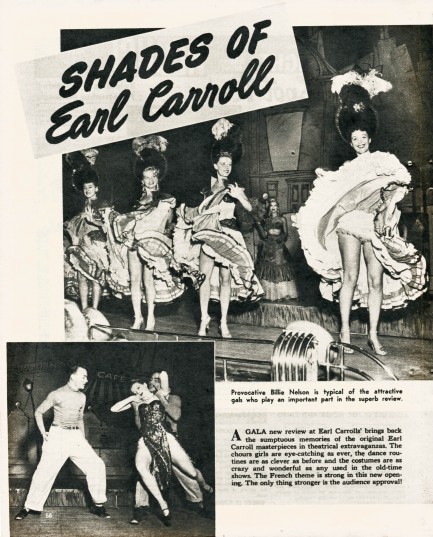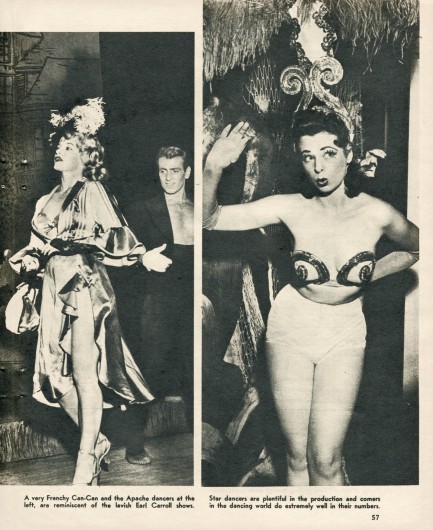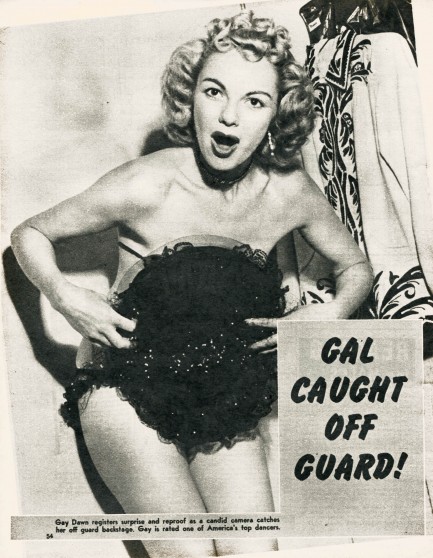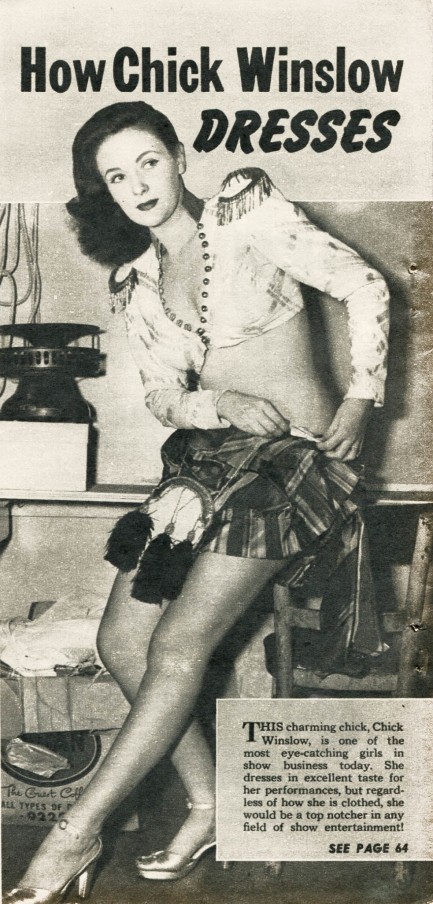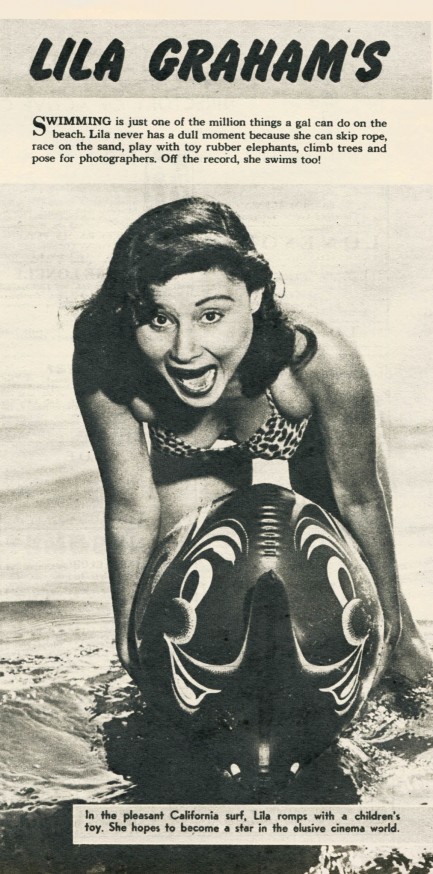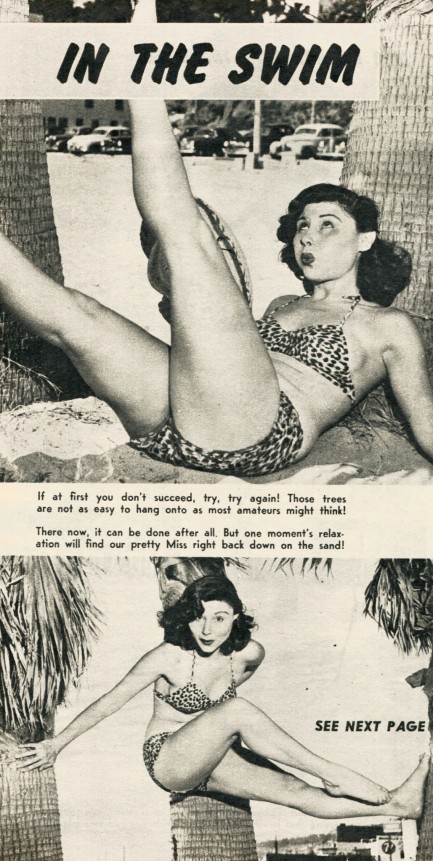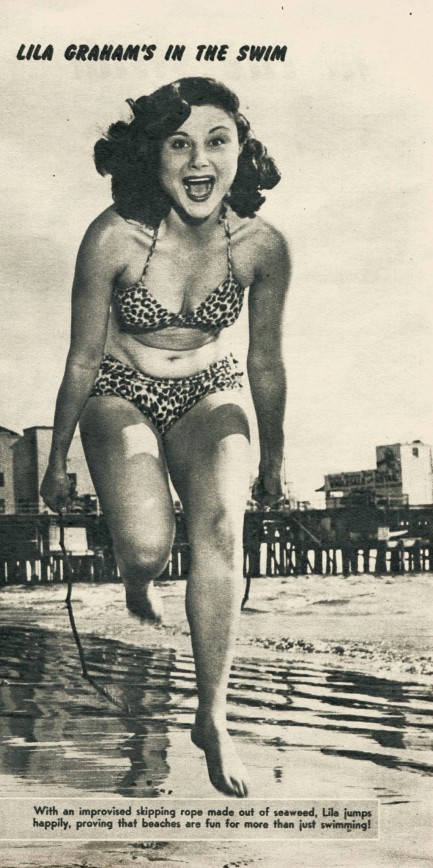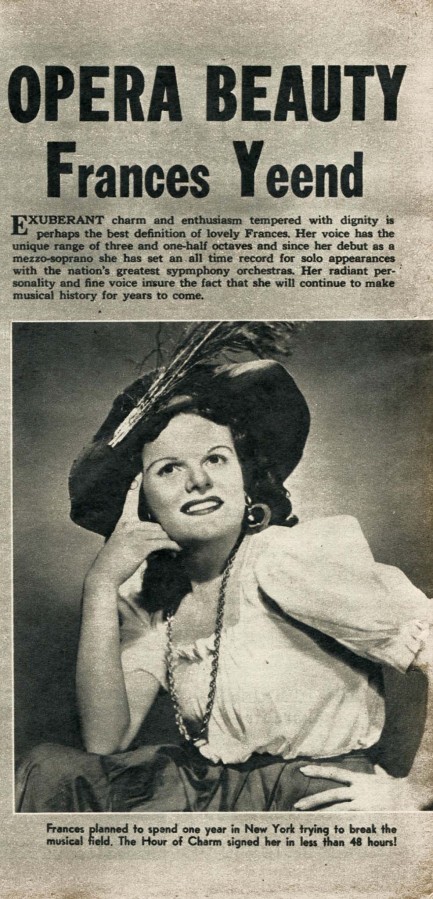 This is the best Laff you'll have all day. 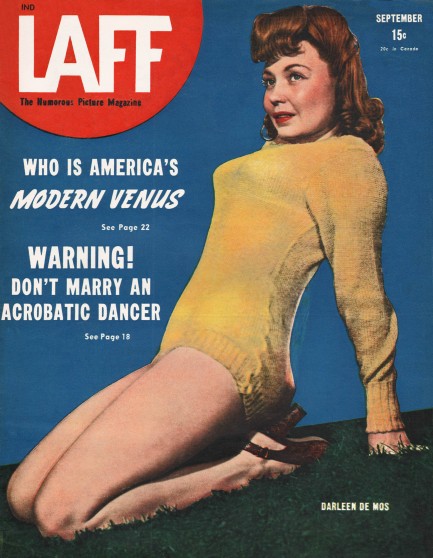
We've posted three issues of Laff magazine over the years, and we return to that publication today with an example from this month in 1946 featuring starlets, showgirls, and burlesque dancers of the highest order. You get Jane Russell, Adele Mara, Vera Ellen, and Myrna Dell, amongst others, but the winner in these pages is Acquanetta, aka the Venezuelan Volcano, who gets a striking tropical themed centerfold photo. In addition, you get a bit of sports coverage—specifically baseball, which is appropriate with the MLB playoffs starting tonight—as well as numerous cartoons. These cartoons—the laffs in Laff magazine—tend to be sexist by today's standards, but then so is this entire website, really, which is an unavoidable side effect of focusing on vintage fiction, art, and photography. We hope the historical significance of the material overshadows all else. In any case, we included the cartoons despite their mostly lame humor, due to the fact that they're high quality illustrations well worth seeing. All that and more appears here in forty-plus scans and zooms, and you can see the other issues of Laff by clicking its keywords below.  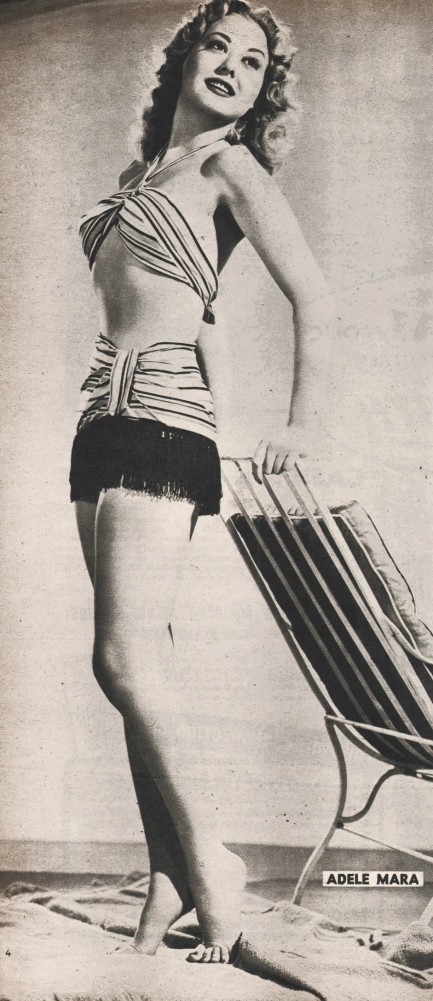 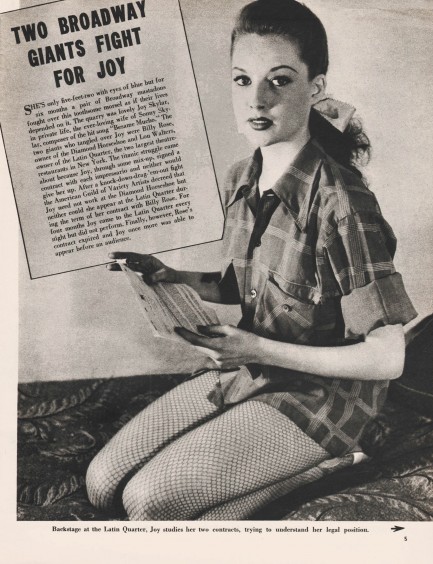 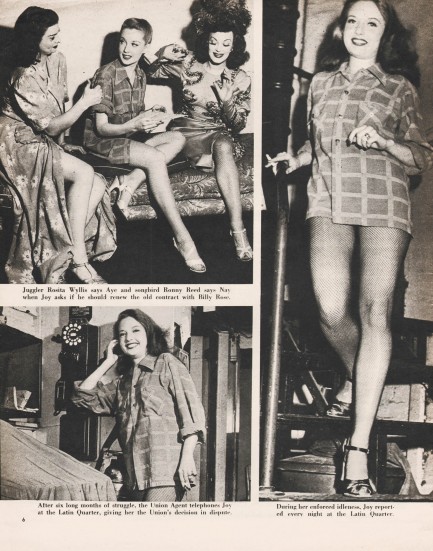  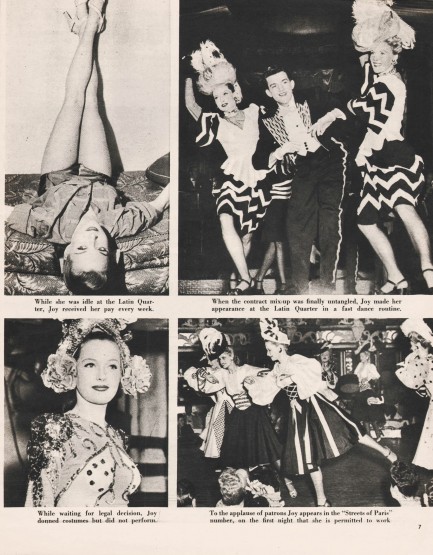  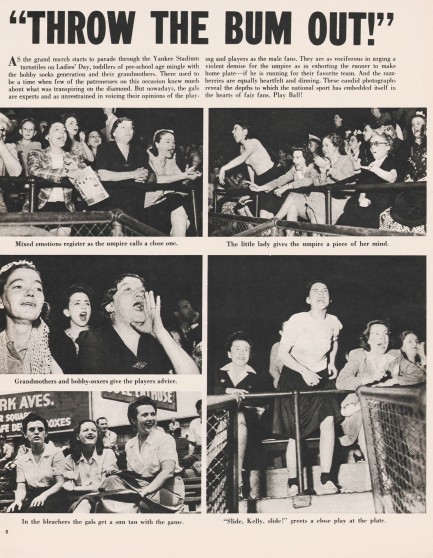 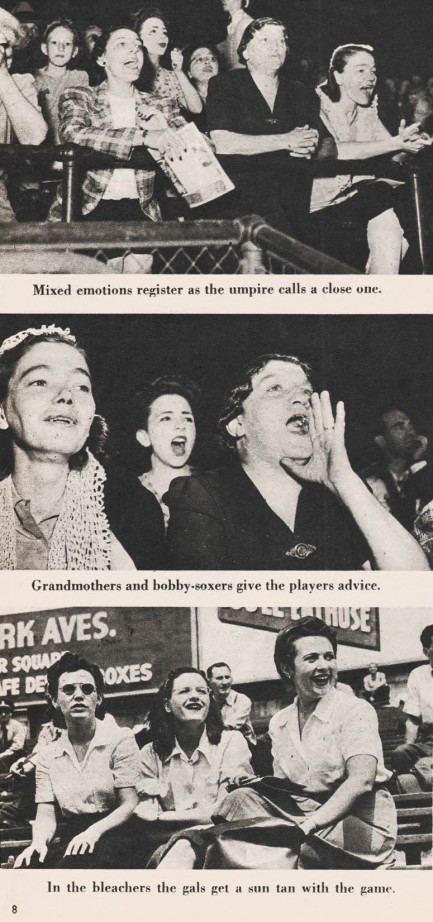 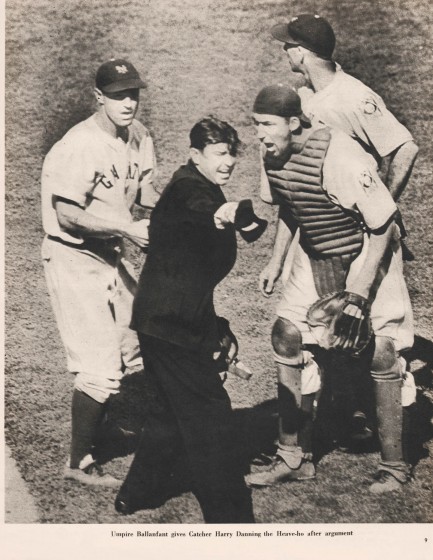 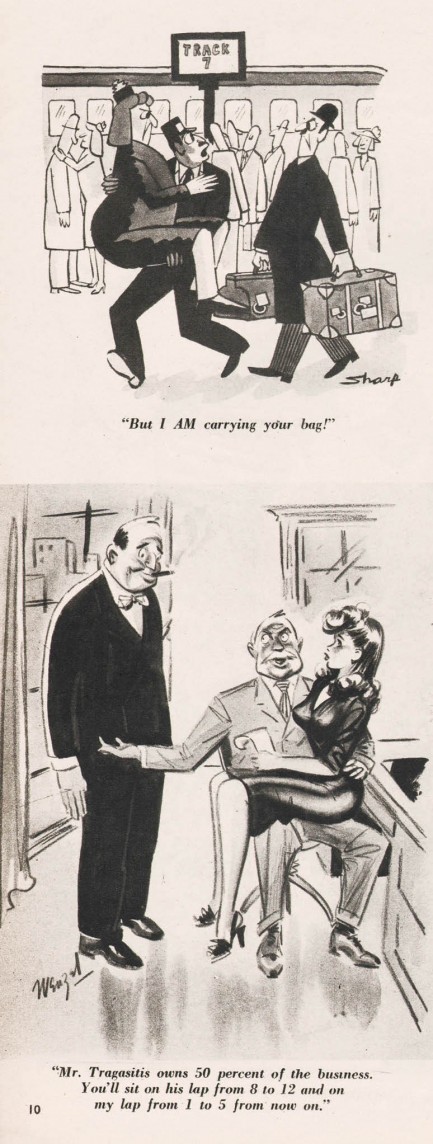 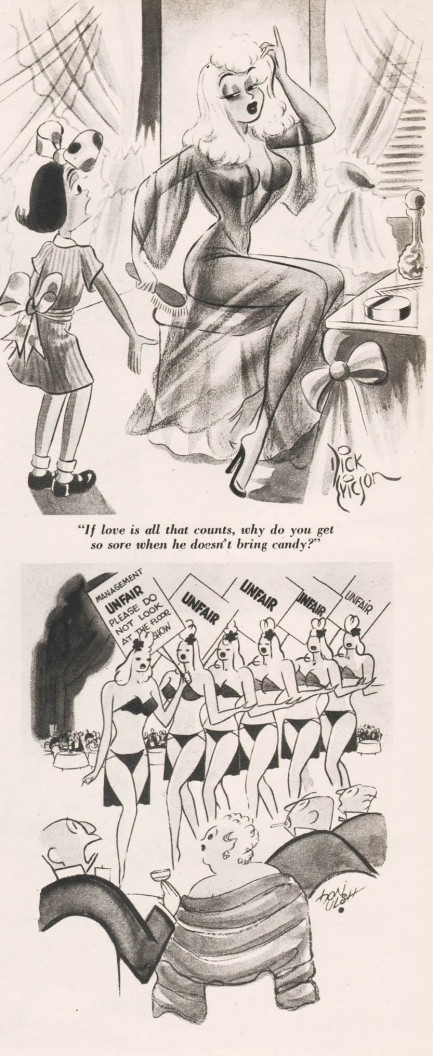 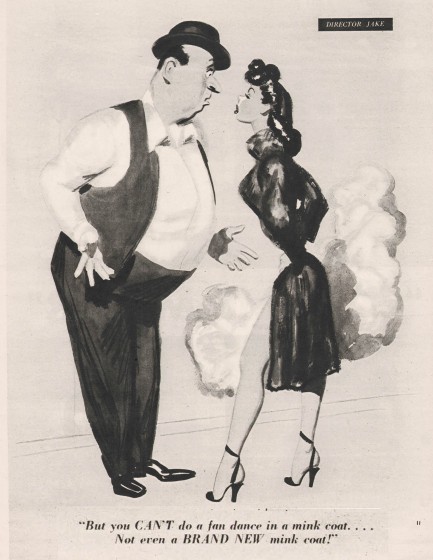 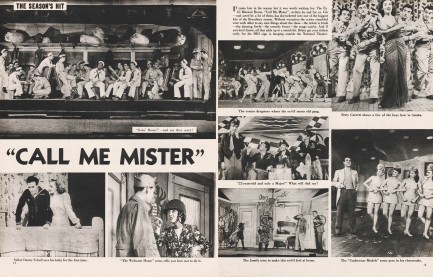 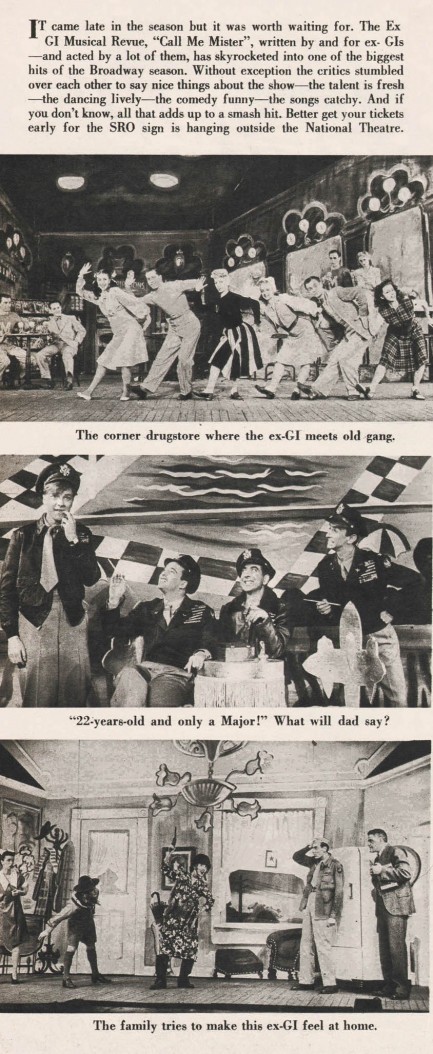 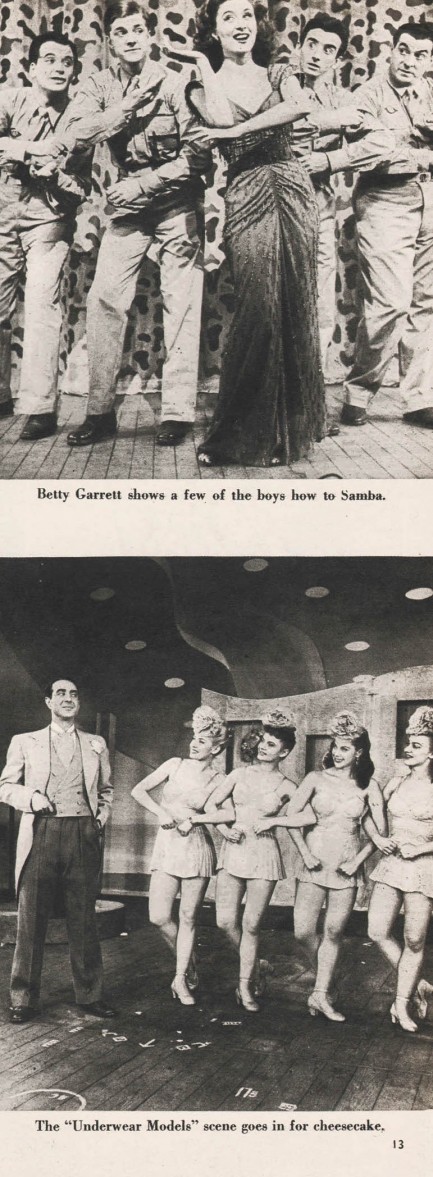 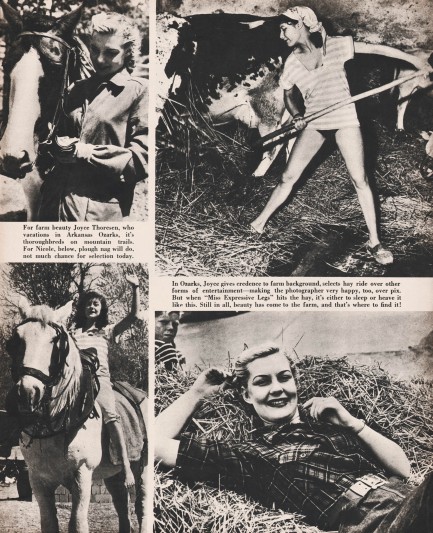  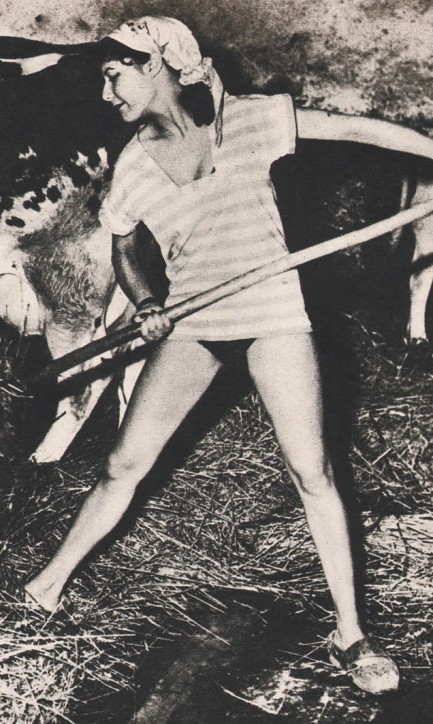 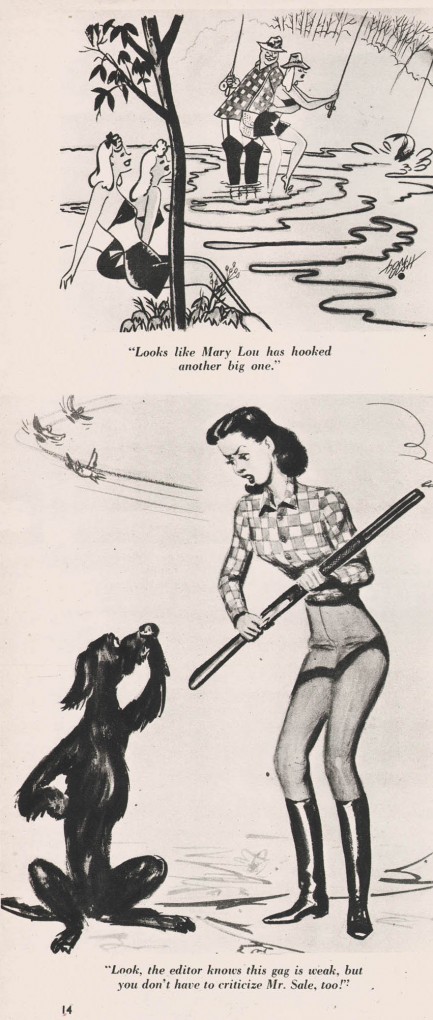 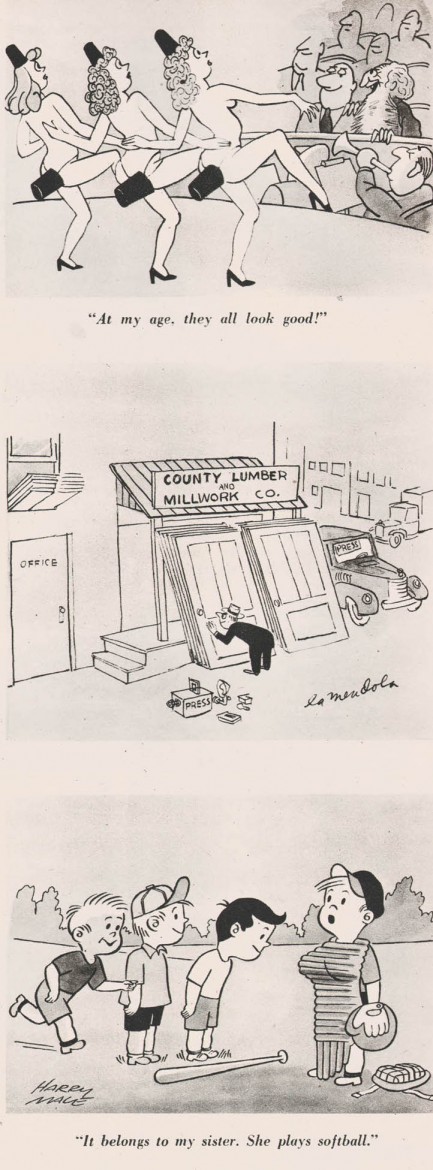 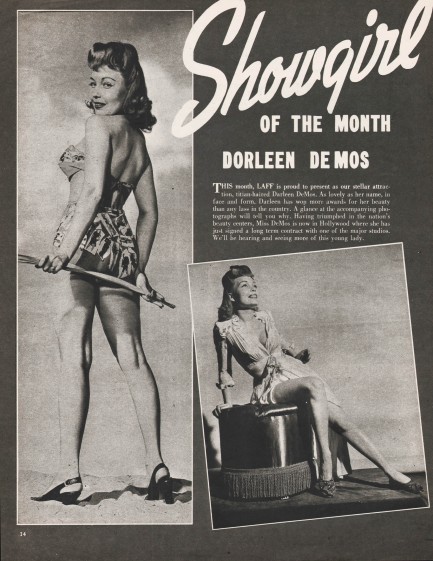 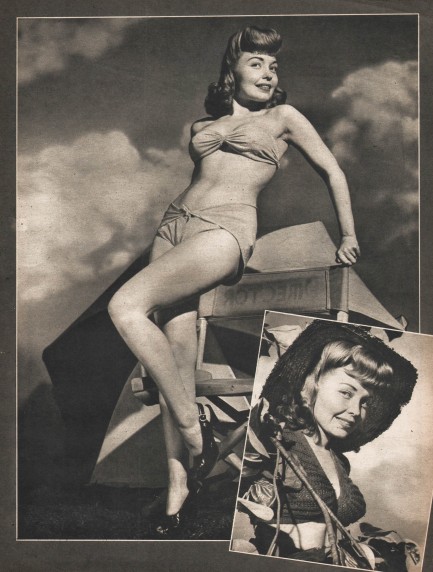 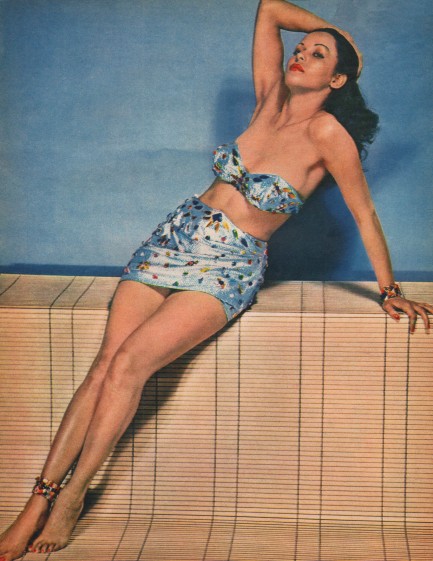 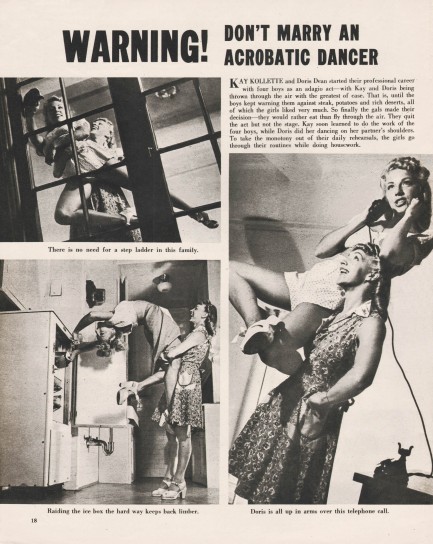 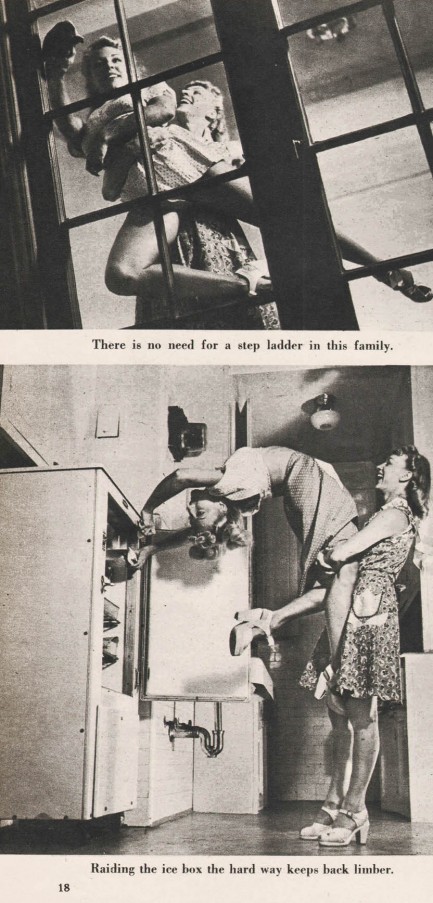 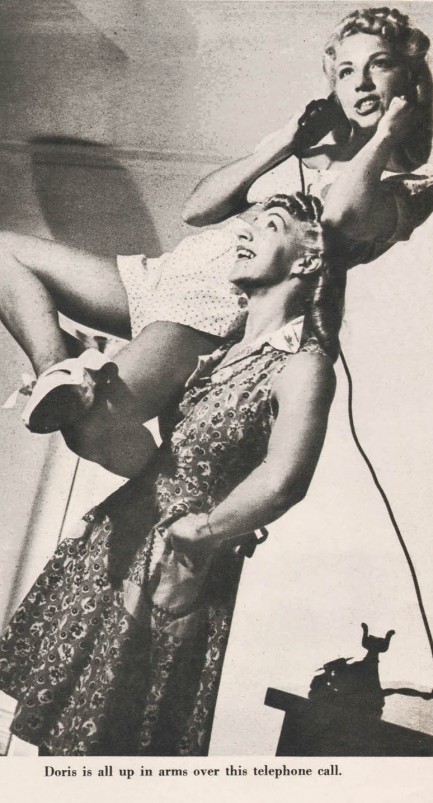 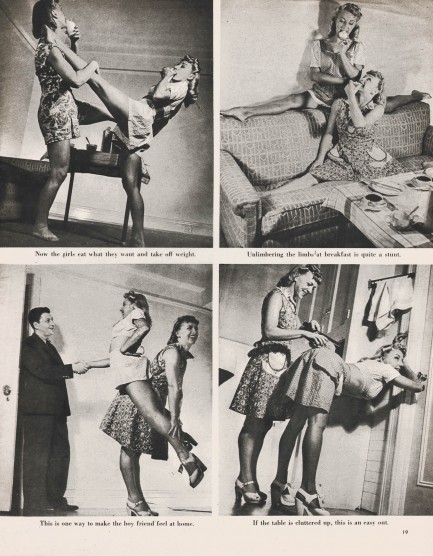 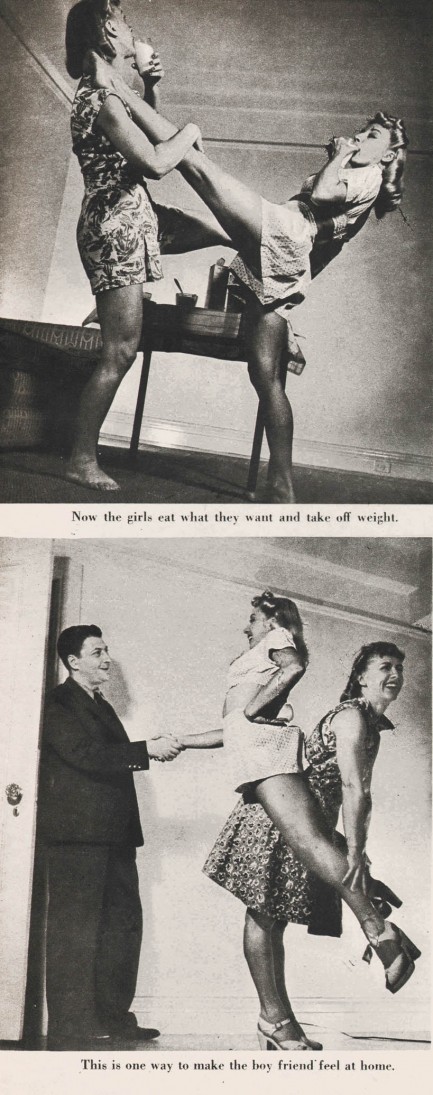 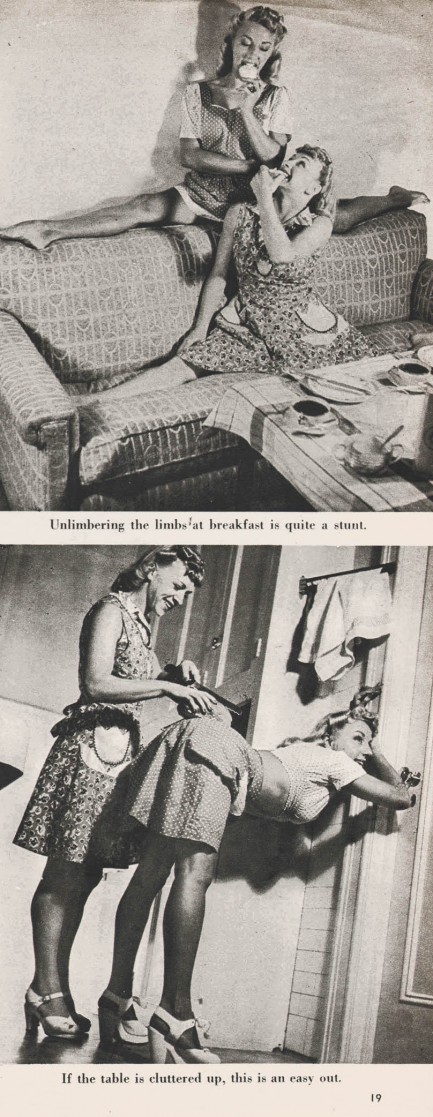 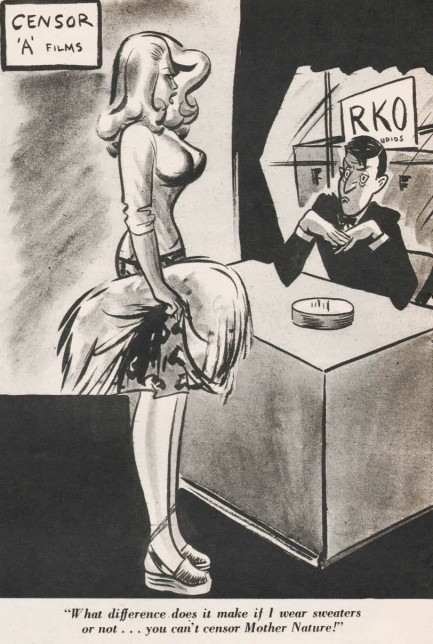 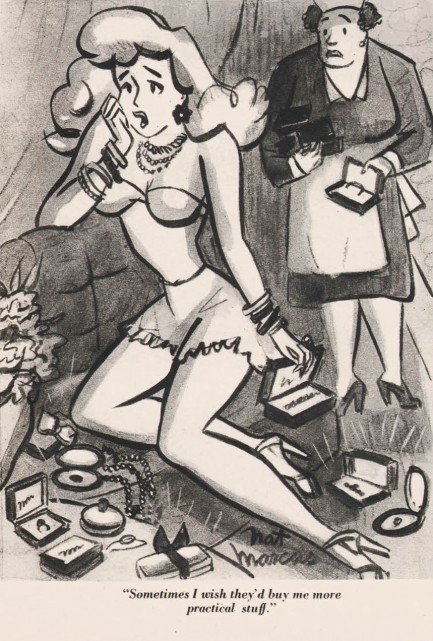 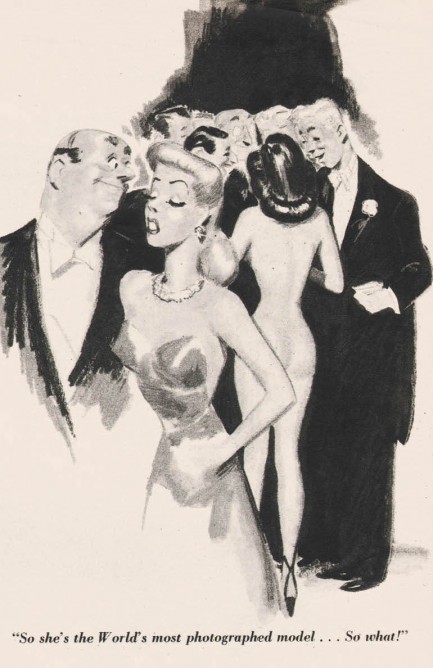 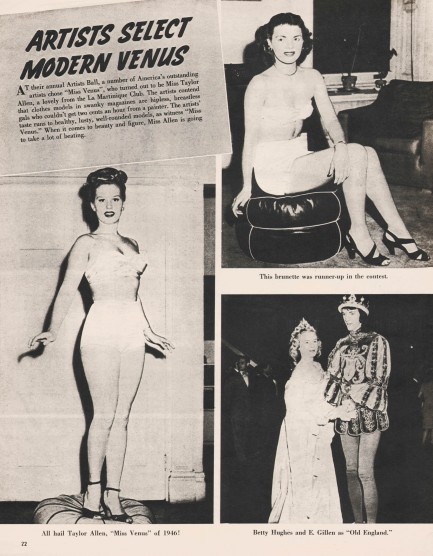 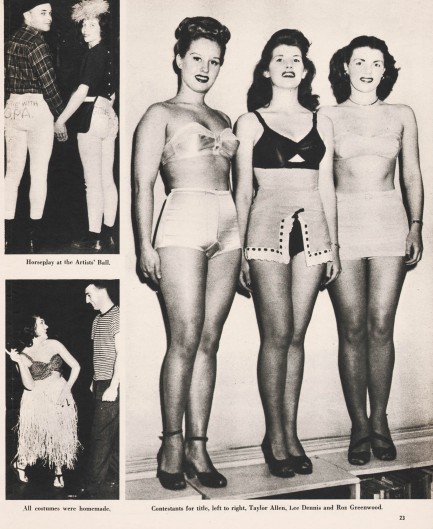 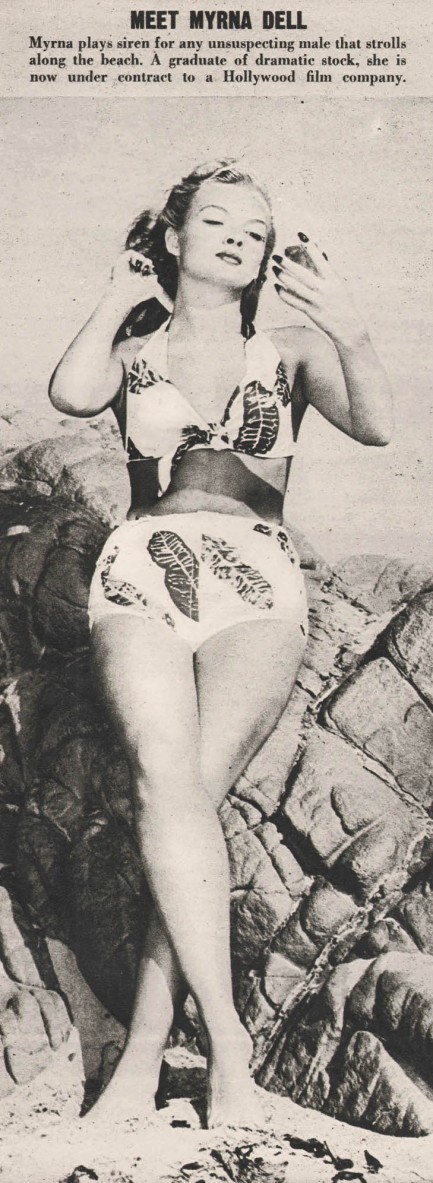 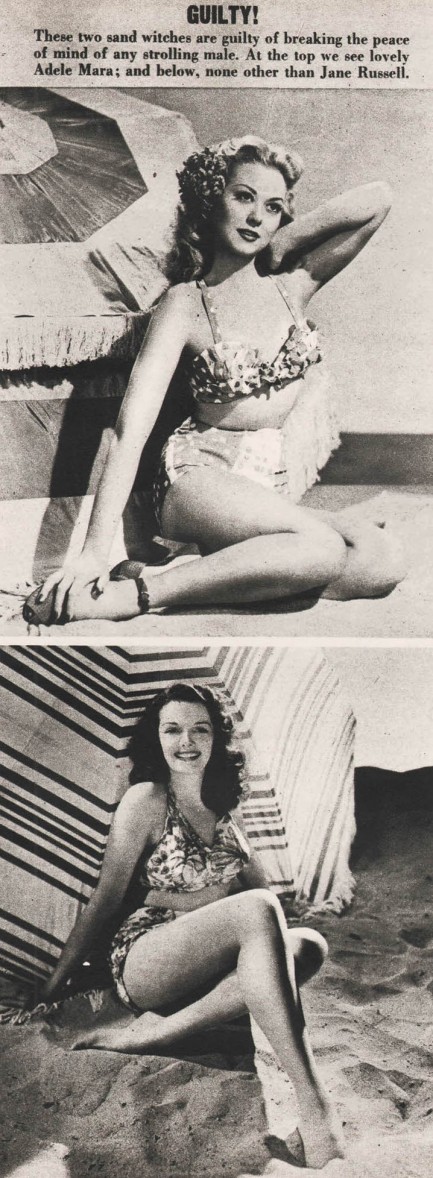 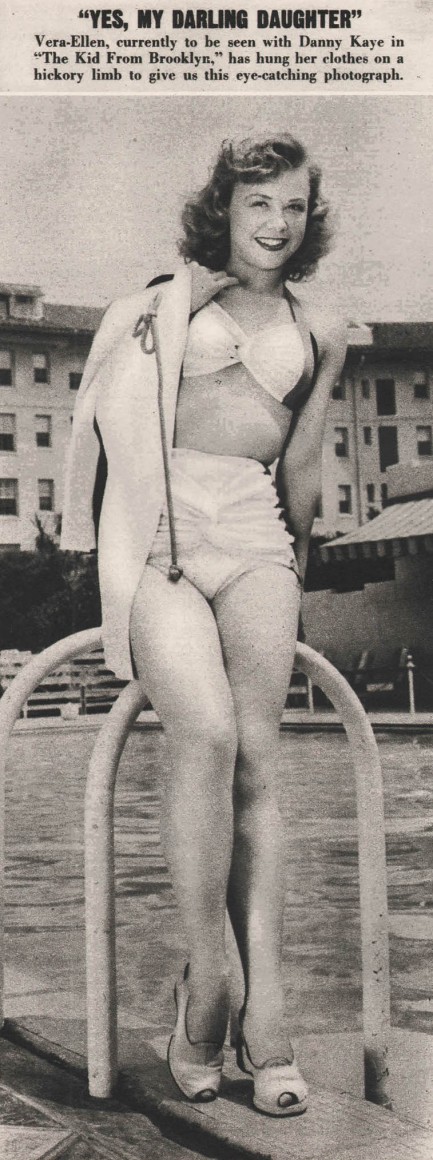 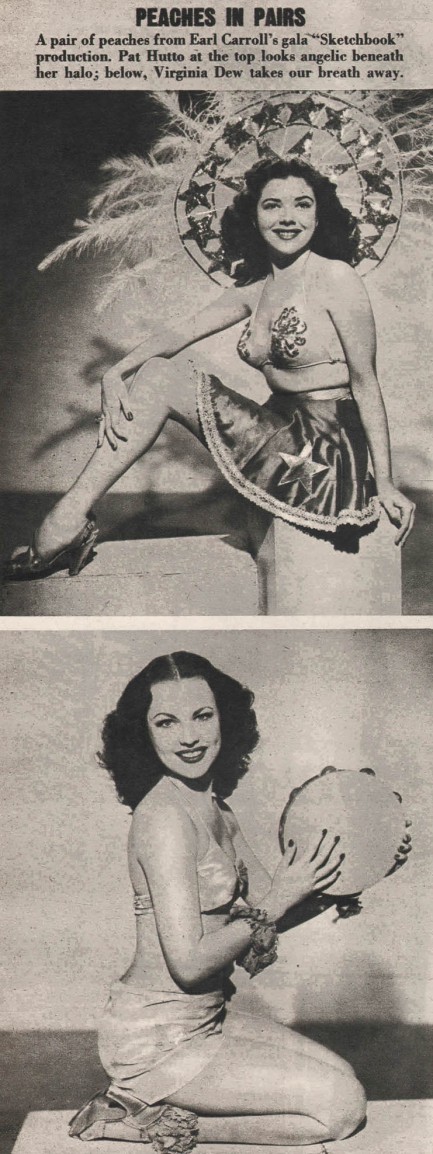 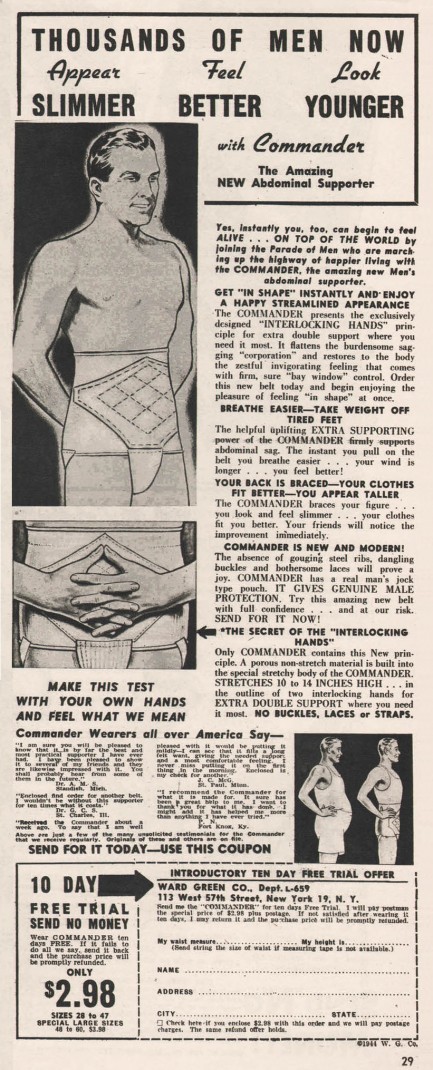
 Lee provides the style, Laffin provides the substance. 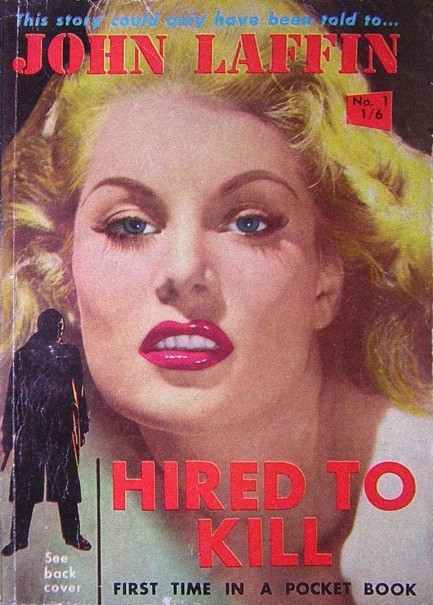
We're back to Horwitz Publications and its appropriation of Hollywood stars for its covers. If you haven't seen those they're all worth a look because of their usage of rare images. On the above cover from 1957's Hired To Kill, the face belongs to Belinda Lee, and as always the taste of Horwitz editors is impeccable. But Lee wasn't long for this world. She was just establishing herself as one of Britain's best exports when she became a road casualty during an ill-fated 1961 drive from Los Angeles to Las Vegas.
Moving on to John Laffin, he was one of those authors whose brand was being a real-life adventurer. He was supposedly an ex-commando who was an expert with rifles, martial arts, and throwing knives, and who also spoke five languages. He'd visited thirty-two countries at the time of publication of this novel and was busy adding to the number, according to the rear cover text. And apparently he had been published in fourteen countries and five languages, which makes it a bit embarrassing we'd never heard of him.
We checked out his bibliography and sure enough, the guy wrote a pile of books. Many of them were war biographies and political analyses. He mainly focused on the British experience in World War I, but wrote everything from adventure fiction to an “expert”—i.e white guy's—analysis of the Arab mind. He sounds like an interesting fella, so we may look what's out there that we can acquire for a reasonable price and see what his fiction is like. If we do we'll report back.
 Oh! Heh heh. You had something on your shirt and I was... er... just going to stab it for you. 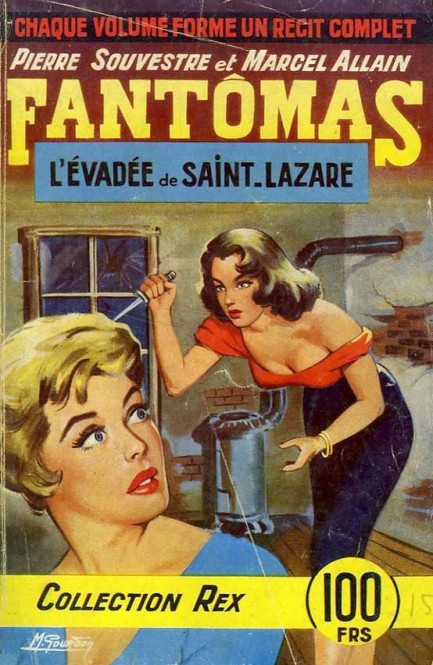
It's been a while since we featured Michel Gourdon's work, so above you see a cover for L'évadée de Saint-Lazare by Pierre Souvestre and Marcel Allain, for Paris based publishers Éditions Robert Laffont, number 29 in its series Collection Rex. The book is about a ruthless criminal named Fantômas, who wears a blue mask and black gloves. He was one of the most popular creations in the history of French literature. Souvestre and Allain wrote thirty-two books about him between 1911 and 1913. That's not a typo. They wrote fast, about a book a month, and were greatly helped by the money earned by selling him to the movies, where he became a stalwart of France's early silent cinema. Éditions Robert Laffont republished the books during the 1960s, with Michel Gourdon illustrating all of them, and the above edition coming in 1963. Rear cover below. We'll probably get back to Fantômas later.
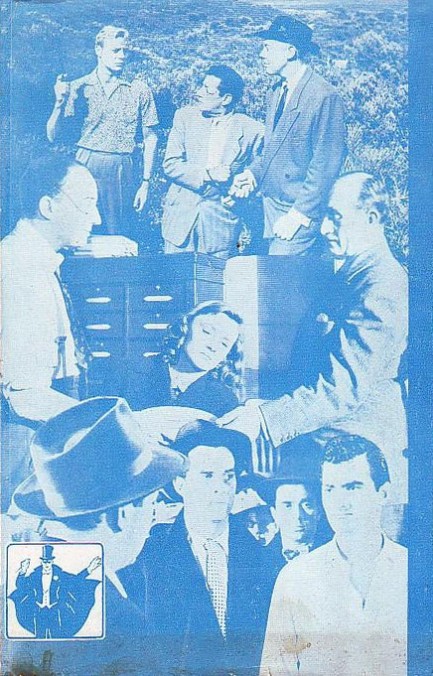
 Hands up, Earthling—this weapon is set to kill. It also can be set to broil, roast, toast, and warm. But you I'll kill. 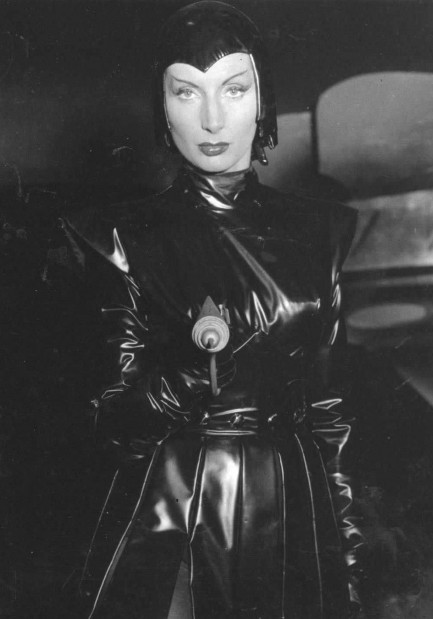
This photo shows British actress Patricia Laffan, in costume as Nyah in 1954's sci-fi epic Devil Girl from Mars, in which she was the titular Devil Girl. The movie is a schlock classic. Made in England, in the story Laffan pilots a flying saucer to London, where she's looking for male breeding stock after a war between the sexes wiped out all the males on her planet. If we remember correctly, she does incinerate a couple of people with that gun of hers. She also has a robot that does the same. Devil Girl is probably Laffan's best known role, but she also had major parts in Quo Vadis and Death in High Heels. We may reacquaint ourselves with Devil Girl and report back. Below is another shot from the film, and as you can see she's ditched the multi-function ray gun for an immersion blender. Martians are so advanced.
 They say it’s the best medicine. 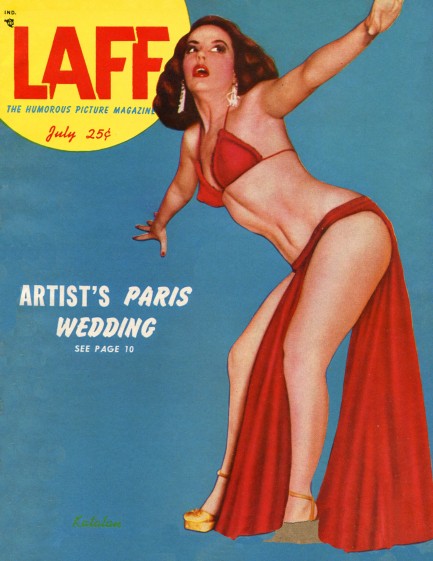
Above, the cover of Laff magazine from July 1952, featuring Kalantan, who began life as Mary Ellen Tillotson and earned success as a burlesque dancer. Laff also offers up images of opera singer Frances Yeend, model Eugenie Bennett, actress Joi Lansing (called “Joy” here), and others, all below. If you’re curious, you can see Kalantan shake her moneymaker here.
|
 |

The headlines that mattered yesteryear.
1945—Churchill Given the Sack
In spite of admiring Winston Churchill as a great wartime leader, Britons elect
Clement Attlee the nation's new prime minister in a sweeping victory for the Labour Party over the Conservatives. 1952—Evita Peron Dies
Eva Duarte de Peron, aka Evita, wife of the president of the Argentine Republic, dies from cancer at age 33. Evita had brought the working classes into a position of political power never witnessed before, but was hated by the nation's powerful military class. She is lain to rest in Milan, Italy in a secret grave under a nun's name, but is eventually returned to Argentina for reburial beside her husband in 1974. 1943—Mussolini Calls It Quits
Italian dictator Benito Mussolini steps down as head of the armed forces and the government. It soon becomes clear that Il Duce did not relinquish power voluntarily, but was forced to resign after former Fascist colleagues turned against him. He is later installed by Germany as leader of the Italian Social Republic in the north of the country, but is killed by partisans in 1945. 1915—Ship Capsizes on Lake Michigan
During an outing arranged by Western Electric Co. for its employees and their families, the passenger ship Eastland capsizes in Lake Michigan due to unequal weight distribution. 844 people die, including all the members of 22 different families. 1980—Peter Sellers Dies
British movie star Peter Sellers, whose roles in Dr. Strangelove, Being There and the Pink Panther films established him as the greatest comedic actor of his generation, dies of a heart attack at age fifty-four.
|

|
|

It's easy. We have an uploader that makes it a snap. Use it to submit your art, text, header, and subhead. Your post can be funny, serious, or anything in between, as long as it's vintage pulp. You'll get a byline and experience the fleeting pride of free authorship. We'll edit your post for typos, but the rest is up to you. Click here to give us your best shot.

|
|
















































